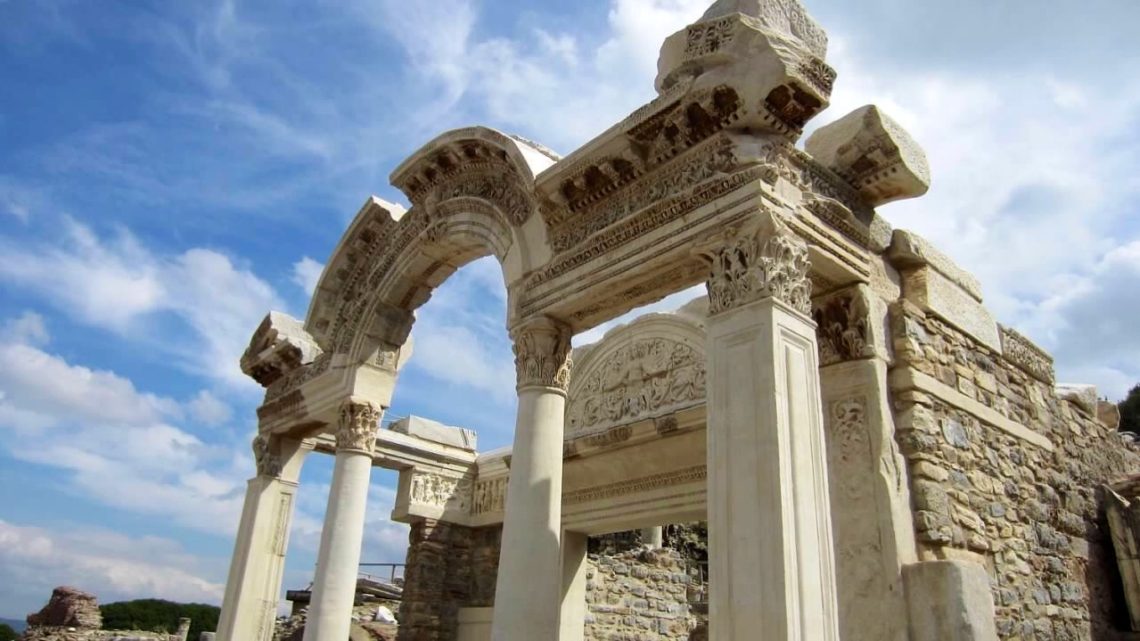
Mediterranean Cruise Series Episode 2 Greece & Turkey
Bon Voyage! Thanks for traveling with me! Welcome to Episode 2 of the Mediterranean Cruise Series. Our first two days on board ship were “At Sea.” We had to get from Venice, on the northernmost part of Adriatic Sea, to Athens in the Aegean Sea. We had plenty to do. We were not bored. We spent plenty of time on the pool deck, and staff were great at helping find deck chairs. We played a few games in the casino, and visited the Galaxy Lounge, and of course we ate. A lot.
The food was great. We always ate breakfast at Ruffies -no really it was Ruffles. My daughter misread the sign the first day, so in my wonderful sense of sarcastic humor, I called it Ruffies the rest of the trip just to give her a hard time. This was our breakfast spot because they had an “American Bacon” option on the breakfast buffet, and who doesn’t like bacon?
I mentioned in my previous post that I appreciated the cleanliness of the ship. Every single day, at every single meal at Ruffles we were greeted by “Washy Washy” – a happy man who had hand sanitizer in a spray bottle and squirted everyone’s hands before they entered the restaurant. Be still my heart! I have a huge germ phobia (I have mentioned this before), so this just made my day! He also greeted everyone with, “Happy happy, washy washy, have a nice life!” which we thought was a riot.
Our second most frequented food stop on board was the Blue Lagoon. They had burgers and other types of bar food. My daughter is a super picky eater, so I think she had a burger a day for either lunch or dinner depending on our itinerary. Seriously every day (and sometimes twice)!
Athens Greece
We woke up on day 3 to port in Piraeus, Greece. This was the stop I was most excited about. Having taught about ancient Greece for years, I would finally set foot on the Acropolis! One of the things I LOVE to do is share personal stories and photos with my students. It really gets them interested in a topic! And Athens was once on that “Top 10 Rolling Bucket List” that I have mentioned. I think everyone needs a rolling bucket list – check one thing off and add another!
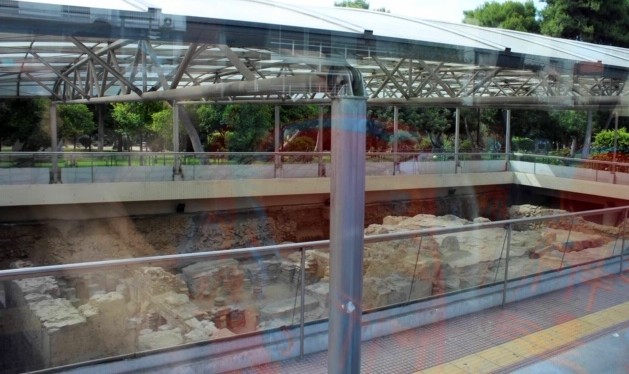
A short 20 minute bus trip, and we arrived in Athens! We got a quick city tour of government buildings and protest squares. One thing that was fascinating from a historical perspective is that the city has tried to put in a subway system but keep running into archeological sites when they dig so they have to stop. We passed by several sites that were partially excavated and then glassed over so they could be seen when passing by in a vehicle.
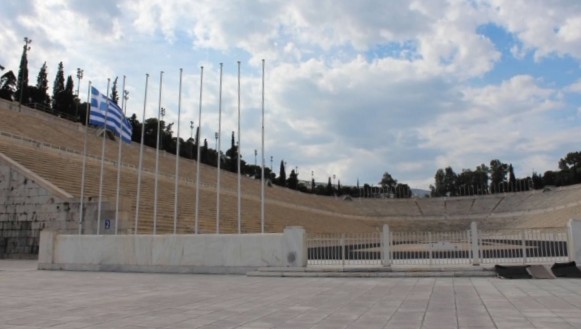
We passed by Hadrian’s Arch, and the Temple of Zeus, which we had time to investigate later on foot. We stopped at the Panathenaic Stadium which was the home of the first modern Olympics. An olympic stadium has been on this site since the time of the Roman Empire. This stadium is a reconstruction. It is beautiful – made completely of marble! There are also great views of the Acropolis and Parthenon in the distance.
Our final stop on the guided tour was the Acropolis – the highest hill in Athens. We walked up the hill – on a marble road – and entered the Acropolis through the Propylaea – the only way into the fortified Acropolis. We also passed by the Temple of Athena Nike built in the 5th century BC to commemorate Athens’ victory over the Persians. After passing through the Propylaea, you can walk around both the Parthenon and the Erechtheion.
The Parthenon was built in the 5th century BC to honor Athena as a virgin, and housed an enormous statue of her in ancient times. The architecture of the Parthenon is fascinating. For example, the columns lean inward at the corners and taper at the top to give the illusion of motion. Today there is a gaping hole where it was “bombed” by the Venetians in the 17th century in order to destroy the gunpowder store of the Turks.
The Erechtheion was also built in the 5th century BC. It was built to honor Athena’s power, a serpent-like creature from which Athena gained her power, and also Posiedon (who took the place of the earlier god Erechtheion). Posiedon, as I am sure you know, was the god of the sea. The sea was obviously very important to Athenians, and they did not want to offend him.
The story we were told is that both Athena & Posiedon wanted to be the patron god for Athens. A contest was held, and whoever presented Athenians with the best gift would become the patron god/goddess. Poseidon struck the rock with his trident and brought forth water (this site was protected by the Erechtheion), and Athena grew an olive tree out of the rock. The Athenians liked the olive tree the best, and chose Athena as their patron goddess. The city of Athens is named after her, and there is an olive tree planted next to the Erechtheion today to commemorate this myth.
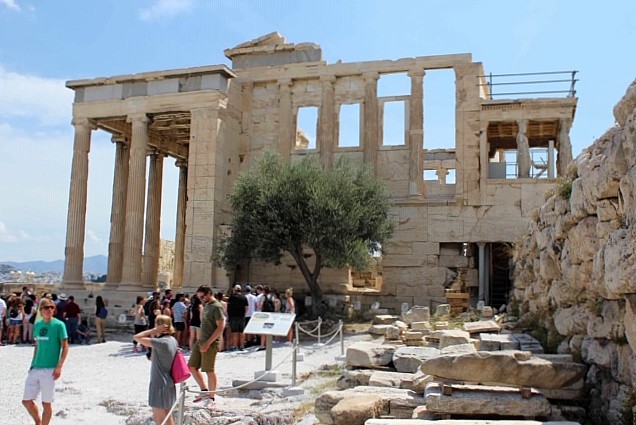
On our way down from the Acropolis, we saw the ancient Agora, Temple of Hephaestus, Mars Hill (where the Apostle Paul preached), the Odeon of Herodoes Atticus, and the Theatre of Dionysus.
We ended our tour near the Plaka, one of the oldest parts of Athens. It is mostly pedestrian only and full of shops and cafes. We did a little shopping, ate lunch (and some amazing baklava), and then walked through Hadrian’s Arch over to see the Temple of Zeus (or what’s left of it anyway) before boarding the bus back to the cruise ship. We booked this tour through Shore Excursions Group, and I was very happy with the quality of the tour and the quantity of time. I recommend checking them out!
Ephesus Turkey
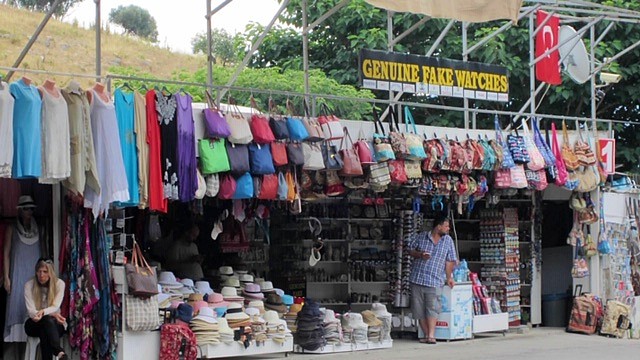
Day 4 took us to the port city of Kusadasi, Turkey. We again booked our tour through Shore Excursions Group, and again, they did not disappoint. Our first stop was the ancient city of Ephesus (yes, it is the home of the Ephesians in the Bible). OK, well our FIRST stop was actually in a small shopping area right outside of Ephesus, where you could buy “genuine fake watches” – it even said so on the sign! Haha! But we didn’t spend much time there, we had too much to see in the ancient city! Two thousand years ago, when the Apostle Paul preached to the Ephesians, the Aegean Sea went all the way to Ephesus – it was a port city. Since that time the Meander River has deposited enough silt to extend the land so that Ephesus is now a few miles inland. The river actually deposits enough silt to extend the land a few meters further each year.
Did you know that ancient Ephesus was the capital city of Asia Minor and part of the Roman Empire? Most of the construction at Ephesus took place during the 3rd century BC. The Library of Celsus was built later – 100s AD. It is absolutely beautiful with its Ionian and Corinthian marble columns and the Four Virtues Statues among other details. It was built to honor Senator Celsus Polemeanus who was buried beneath the floor. It was also one of the largest of ancient libraries before it was destroyed by fire.
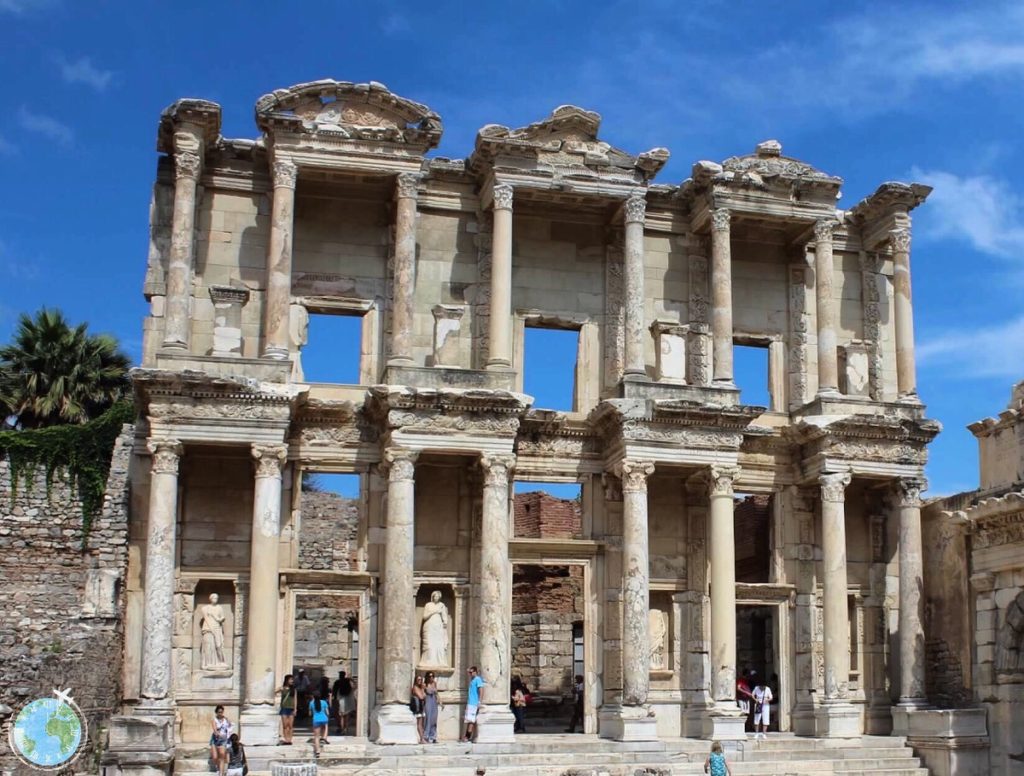
You can learn a lot about life in the ancient Roman Empire by visiting Ephesus. For example, some people in the city had running water that traveled from an aqueduct through clay pipes into their homes. This was a sign of wealth – the more money you had, the larger your clay pipes. Those who could not afford running water drew from a well. Ephesus also had public restrooms, which my middle schoolers love to see pictures of. And given the current state of toilet paper hoarding, you may be interested in knowing that toilet paper did not yet exist. Instead, people in the Roman Empire used (and reused) a spongia (basically a sponge on a stick). Gross!
There is plenty more to see in this ancient city. Trajan’s Fountain is beautiful, as is Hadrian’s Temple. You can walk through the ancient Agora. You can see the Great Theatre where the Apostle Paul preached and Sting has performed.
You can walk along the ancient Arcadian Way that led from the port to the Great Theatre. Mark Antony and Cleopatra once walked this road. The roads in Ephesus are also made of marble! This city is also said to be the final home of Mary, mother of Jesus. If you love history, Ephesus should definitely be added to your bucket list!
Our shore excursion tour also included a rug demonstration. We got to see how silk thread is pulled from the cocoon of a silkworm, and then we watched a woman tying a rug while the process was explained. No wonder those things are so expensive (literally several thousand dollars)! Every single knot is hand tied. We got to walk around barefoot on the finished rugs while we enjoyed a complimentary adult beverage, and then came the sales pitch. We did not buy a rug.
Nor did we buy a leather jacket – at either place where we stopped to look – although we received many compliments! We had some free time after the rug demo, and we wandered in some of the shops and I tried on some leather jackets. They definitely tried all kinds of flattery to convince me to spend way too much on one. I do not look like I could be my daughter’s sister! I passed on the jacket and we made our way toward the ship.
There was a small market area you had to pass through to get to the boat, and a cute young Turkish guy stepped out and asked my daughter if she would like to buy a coat. They were the same coats I had tried on in the other market. I was curious about the price so we stopped. I was again “mistaken” for the older sister. As the young man was getting a jacket he asked how old my daughter was and told her he was 26 and single. Then, when he assisted her into the jacket, she received a kiss on the cheek (only because she turned her head away when she realized what was happening). It was kind of hilarious, but we left – quickly – after that and headed directly back to the ship. And of course I teased her about her Turkish boyfriend for the rest of the trip!
Istanbul Turkey
On day 5, we woke up in Istanbul, Turkey! I was excited for this day because we were visiting the Hagia Sophia, which I teach about in my ancient civilizations class. Did you know that the city of Istanbul is on two continents? In fact, it is the only city in the world to be located on two continents. The Asian side of Istanbul is primarily residential, and the European side of Istanbul is primarily commercial. The two parts of the city are connected by several bridges spanning the Bosporos.
Arriving into the cruise terminal at Istanbul, you start off in the “modern” Istanbul which is about 900 years old. Our tour, again booked through Shore Excursions Group, took us across the famous Galata Bridge to the “old city” which is indeed several thousand years old. This part of Istanbul, was part of the ancient Roman Empire, and called Byzantium at the time. When the Roman Empire was divided, it became the capital city of the Eastern Roman Empire aka the Byzantine Empire, and was renamed Constantinople after the Emperor Constantine.
You have the opportunity to see several amazing places in this “old city” section of Istanbul. First, we drove along the old city walls for several miles. If you look out to the Bosporos along this drive you can also often see dolphins. After we drove through one of the old city gates, we arrived at our first stop, the Hippodrome. In ancient times the Hippodrome was a sort of outdoor arena for horse and chariot races. There were four monuments that lined the middle of the ancient Hippodrome. Three of the four are still in place and can be seen up close. Interestingly, they go several feet down below the modern day street level. The area has been filled in over time so they have been excavated down to their bases.
The next stop on our tour was the Blue Mosque. It is called the Blue Mosque because of the blue tiles that adorn the inside, all of which are original, by the way. Be aware that women must cover their heads to enter. Also all persons must have their knees covered. We had several men in our group that had to wrap a sheet around their waist to cover their knees which made it look like they were wearing wrap skirts! Everyone must also remove their shoes prior to entering the mosque. Our guide gave a a quick crash course on Islam, which is practice by 92.8% of the people in Istanbul, in addition to the guided tour of the interior of the mosque.
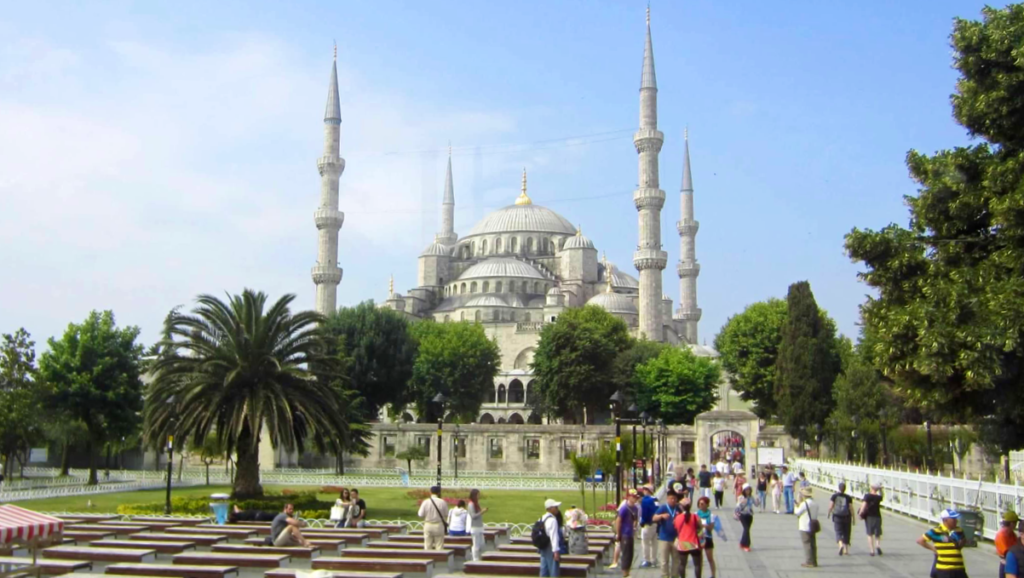
Across the road from the Blue Mosque, is the salmon colored Hagia Sophia. This building has an interesting history. It has been an Orthodox Christian Church (commissioned by Constantine), a Catholic Basilica, and a Muslim Mosque. It is now a museum.
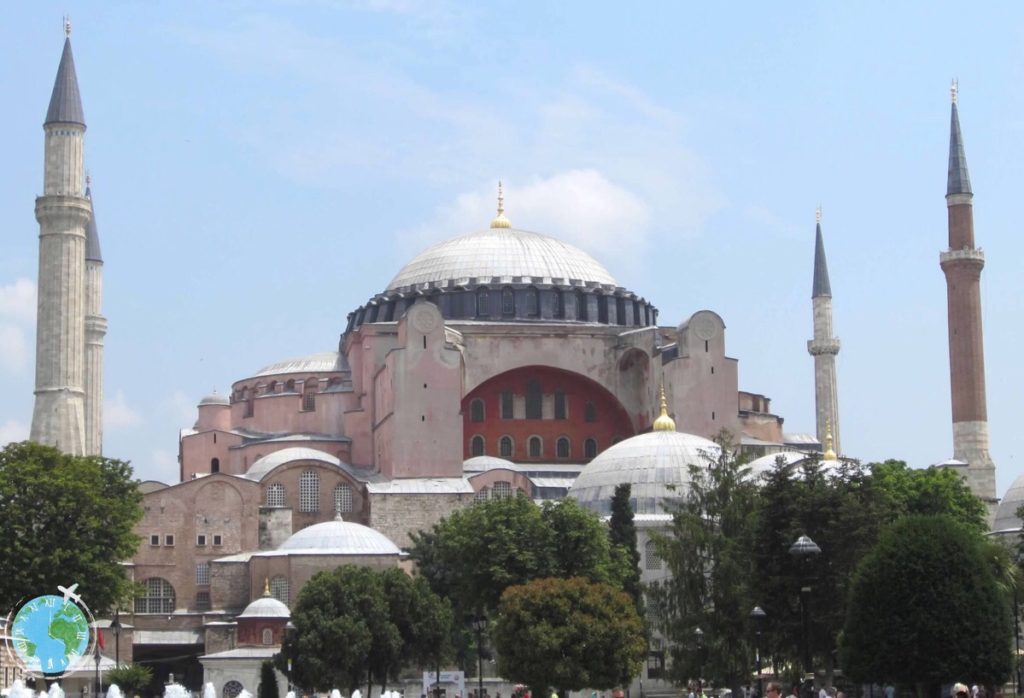
What is unique is that there are sybmols or icons from both Christianity and Islam in the interior. When the Muslims converted the building onto a mosque, they plastered over the Christian mosaics on the walls and broke the arms from the crosses on the doors to make them arrows instead. The museum has since removed some of the plaster to display many of these mosaics once again.
The building that stands today is the third construction. The first two were destroyed. This building was made using “recycled” materials to save time and money, so it is very eclectic inside – most columns and pillars do not match. It was completed in just 5 years. An interesting fact is that much of the marble inside is a mirror image of the slab it is next to. The marble was cut from the same segment using silk thread. I can’t even wrap my brain around that! How can silk cut marble?!?
After the Hagia Sophia, we headed to the Grand Bazaar. We had to walk part of the way, because there are a lot of crazy drivers in Istanbul as it turns out, and someone had just parked in the middle of the street clocking the whole road to through traffic. We did make it to the Bazaar and had time to shop and get some really delicious food.
My daughter also got some great cultural experience when she paid a Lira to use the “water closet” (bathroom) only to get inside and find that it was a squat toilet. She came out of the bathroom with the funniest look on her face. She sat down and told me that she would pay me back the Lira because she “didn’t go” because it was just a hole in the ground. This of course made my day and I told her it was absolutely worth a Lira to me for her to have had that experience! (She has since been to Japan and mastered the squat toilet. Haha!) I even spent another Lira to go in and take a picture for my scrapbook!
Security was a little tighter here getting back to the ship. Our bus had to stop before entering the lot at the cruise terminal, so that guards could check underneath with a mirror. That was new and a little unnerving, but I had not felt unsafe at all throughout the day. (With the exception of some of the traffic and crazy drivers).
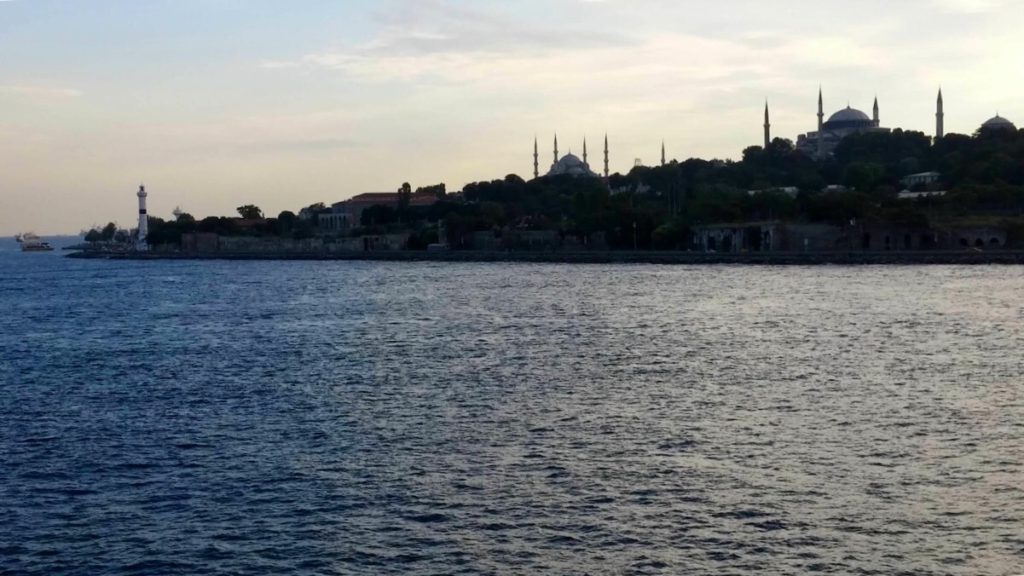
Mykonos Greece
On day 6 we slept in as we were not scheduled to dock in Mykonos until 1:00. We did get to the meeting point for our tour early as we discovered in Istanbul that your tour gets rushed if you go in the last group because you wait around for the latecomers. We made the first group to my relief.
Fun facts we learned about Mykonos:
- It is a law that houses have to be painted white. The original whitewash contained something that kept bugs away, and the white reflects the heat.
- The edges of the houses are rounded to help with the wind.
- All property owners are either very wealthy, OR the property has been passed down over generations.
- There are so many churches because the island was traditionally a fishing island, and fishermen would often vow to build a church if they made it home safely. Most churches are privately owned by individual families. Many are connected to homes.
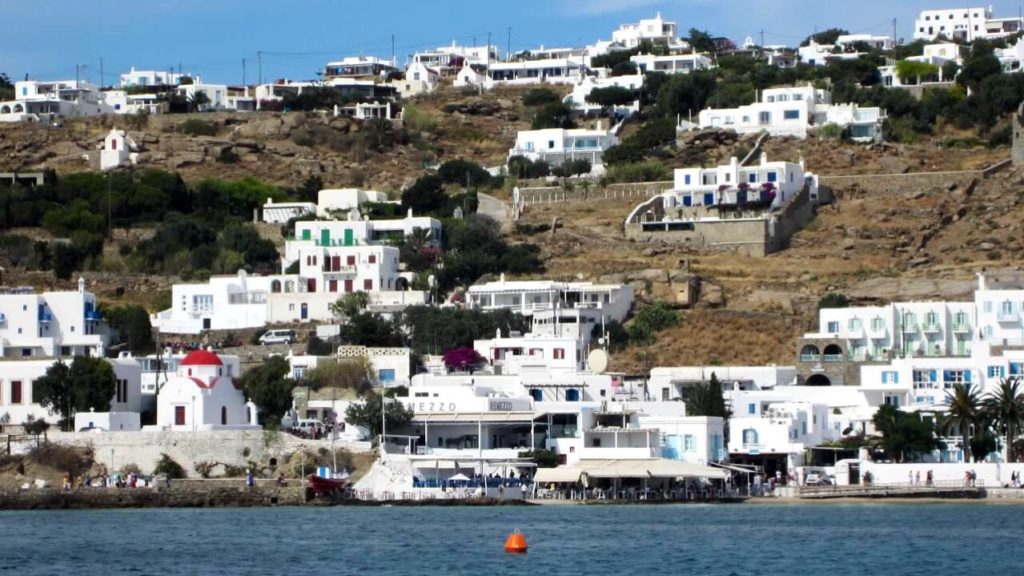
Our first stop on the tour (yes through Shore Excursions Group) was at Kalafatis Beach. If you ever go to Mykonos, you HAVE to make it here! It is gorgeous! The water is crystal clear. Bring some water shoes if you have sensitive feet, because it is a pebble beach. I do wish that we would have had more time to spend there. It really was breathtaking!
The next stop on our tour was the Panagia Tourliani Monastery. We had a quick snack across the street before we went in – a honey covered pastry and an iced coffee – so good!! The monastery was beautiful inside and out. The outside was draped with hot pink bougainvilleas in several different places which contrasted with the whitewash to appear even brighter. The monastery was built in the 17th century, and the marble bell tower was added in the 18th century. The interior of the monastery is intricate and eclectic. Carvings are very detailed – the altar area had been hand carved in Florence in 1767, and the mosaics housed in it made it really almost gaudy, but in a beautiful way.
From the monastery it was back to Mykonos Town for a city tour. This town is picture perfect. The streets are narrow and winding by design to protect from the wind and pirates. I should also point out that most of the streets in Mykonos Town are pedestrian only. I can understand how it would be effective. I am sure we would have gotten lost without our guide. If you aren’t on a time schedule (ie having to make it back on the ship before it leaves) it wouldn’t matter. You could wander around all day and never get bored.
We passed numerous churches, and a place called the Three Wells where there are, not surprisingly, three wells. They are very shallow wells that used to supply all of the water for the area. We then arrived at the famous windmills built in the 16th century. From the windmills you have a great view of Little Venice and the port.
After the windmills we followed our guide through the winding streets to the Panagia Paraportiani church. Construction began in 1425 and took 300 years to complete. It is actually five smaller churches connected together. It is also right across from the Folkloric Museum, which I also recommend if you’re into learning about local history when you travel. You will learn all about what traditional Mykonian life was like. It was a great little museum – very informative!
I loved Mykonos, it was kind of a drag that we got into port so late in the afternoon. I could have spent way more time there. If you go you could easily spend several days. One at Kalafatis Beach, one or two wandering Mykonos Town shopping and going in the museum, and another heading farther inland to places like the monastery!
It is one of the downsides to cruises I suppose – the limited time. Places are generally very crowded on “cruise ship days” and not as crowded when there are no ships in port. The nice thing about a cruise, however, is that you only have to unpack and move your luggage once, transportation is generally worry free and easy if you book shore excursions, and you can get a great overview of a lot of places to make a list for next time! We had a great experience using Shore Excursions Group.
What is on my “next time” list, you ask? Well, when I return to Athens, I will want time to explore the Agora, and also the museums that house all of the friezes and other artifacts from the Acropolis – the National Archeological Museum and the Acropolis Museum. In Ephesus, I would want more time to casually wander the ruins on a less crowded “non cruise ship” day. I would also like to go into the Archaeological Museum that is on site, the Temple of Artemis, and Basilica of Saint John. In Istanbul, I would take a short cruise on the Bosporus and spend more time at the bazaar – it is gigantic. In Mykonos, I would want time to explore Mykonos Town without a time constraint and a full day at Kalafatis Beach!
Click to read about the first days of our trip, Airport Antics & Venice


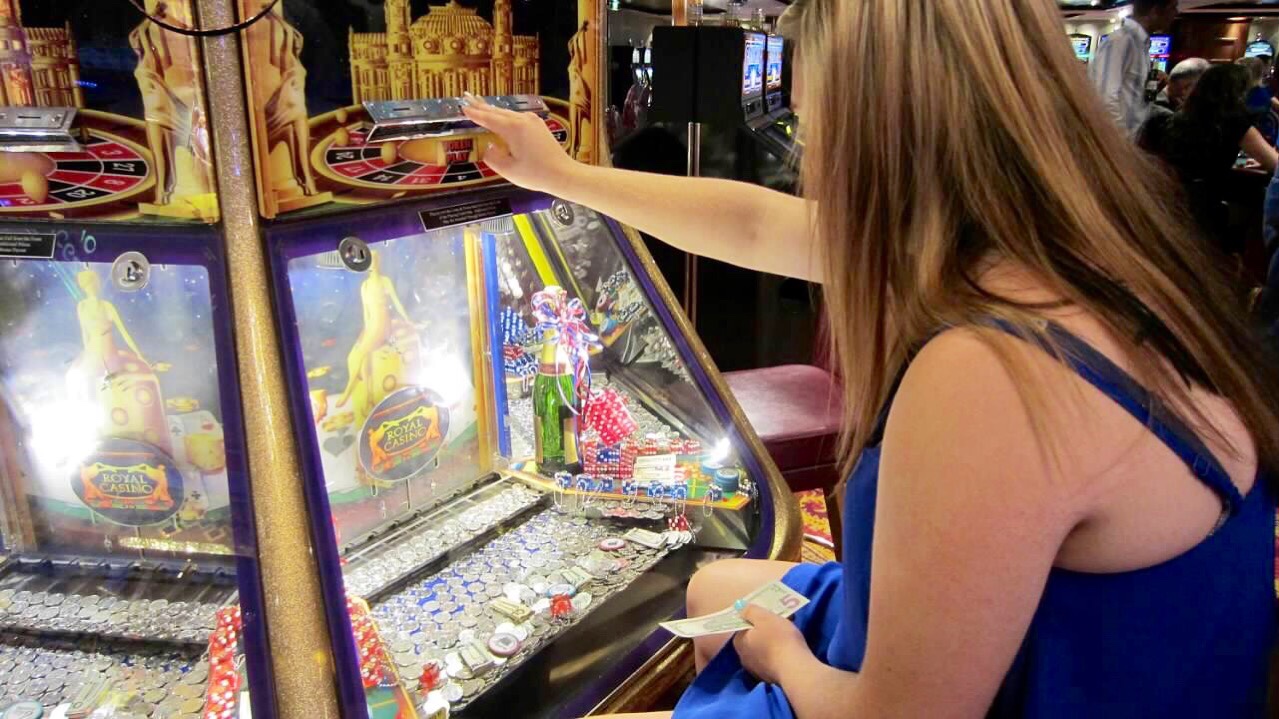
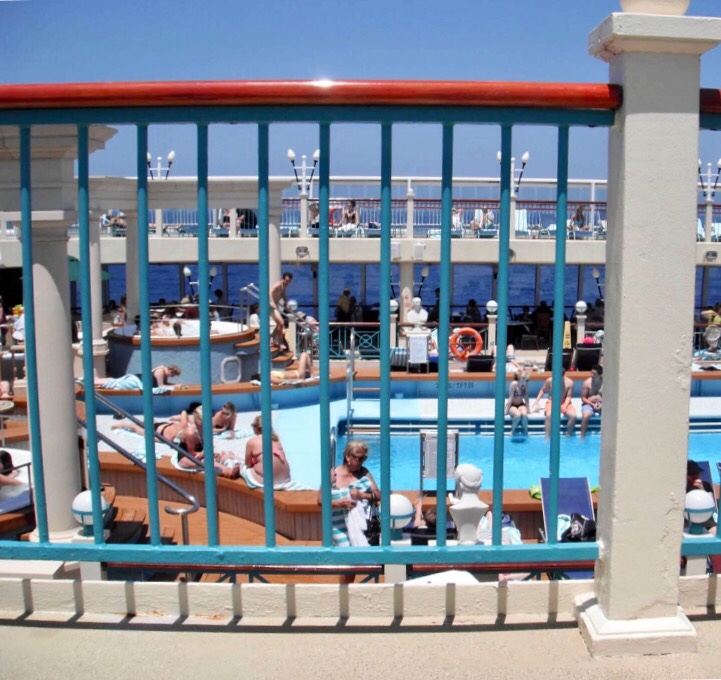
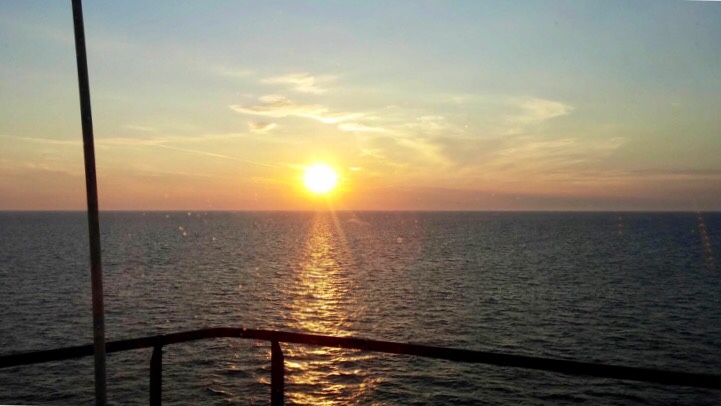
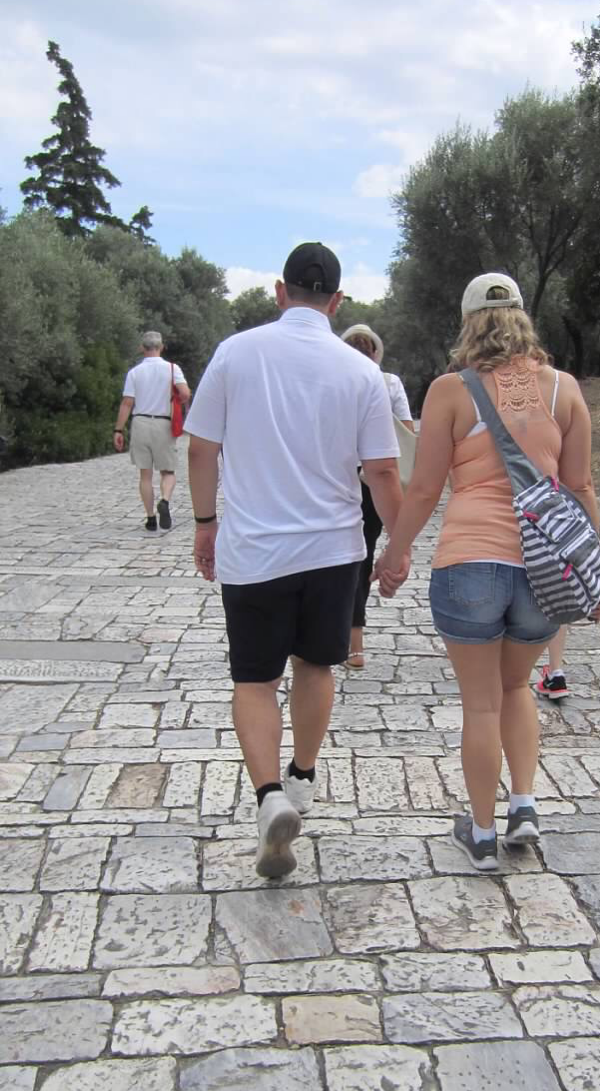
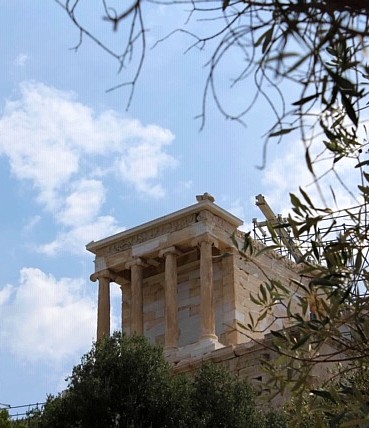
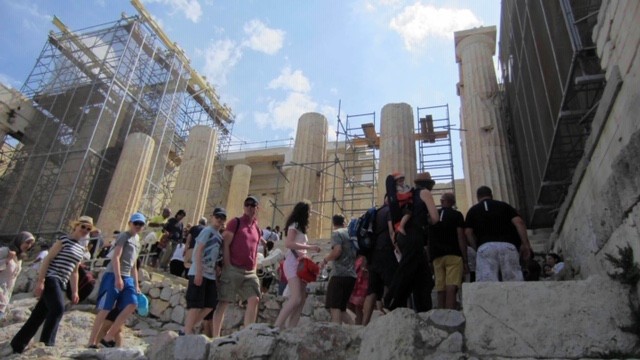
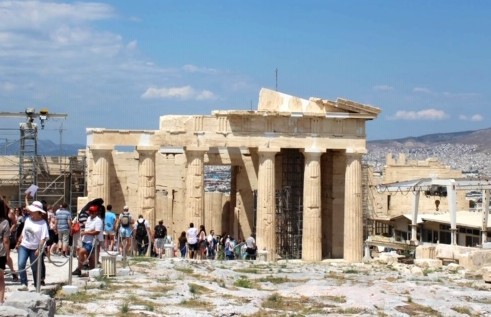
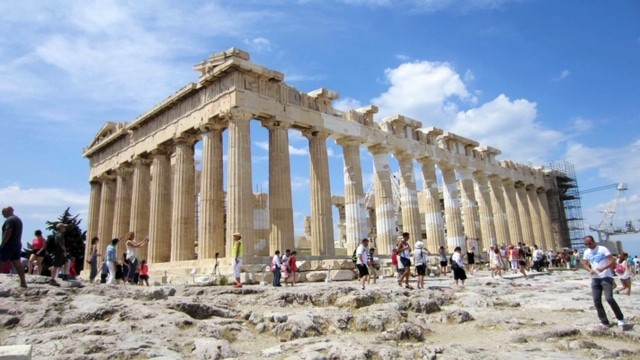
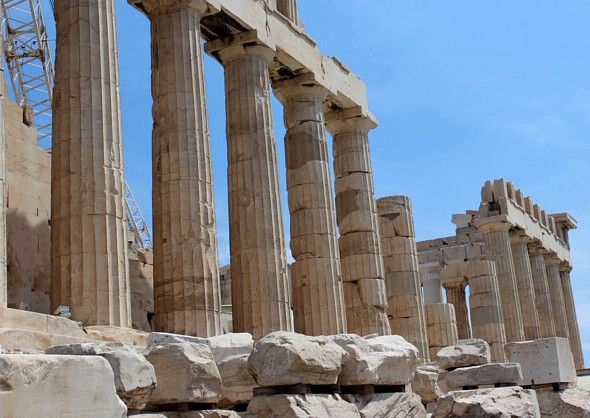
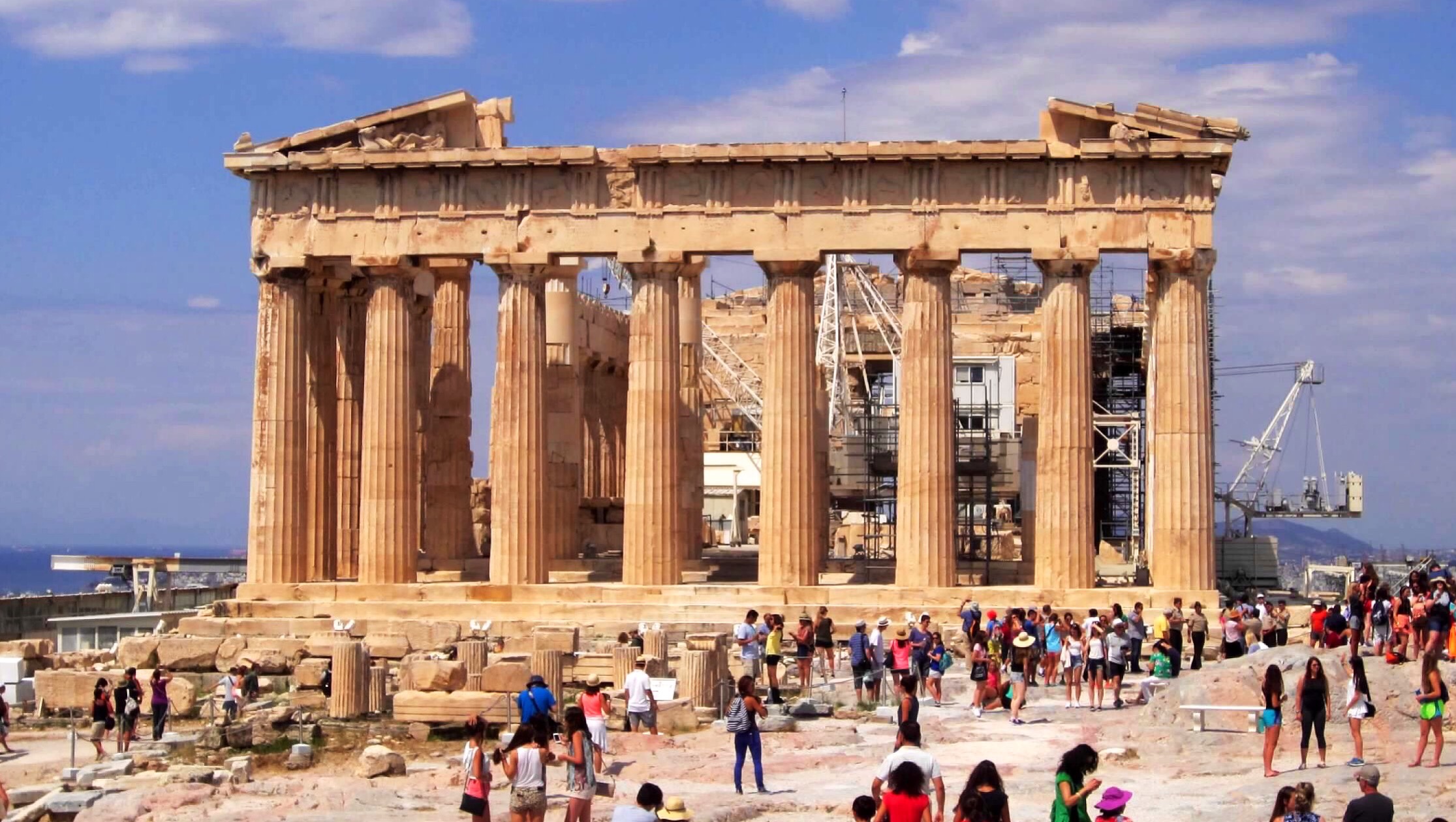
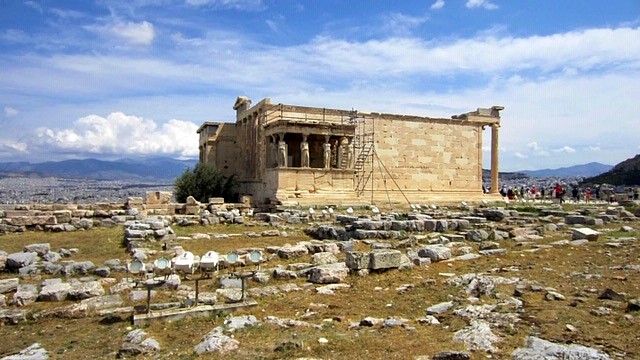
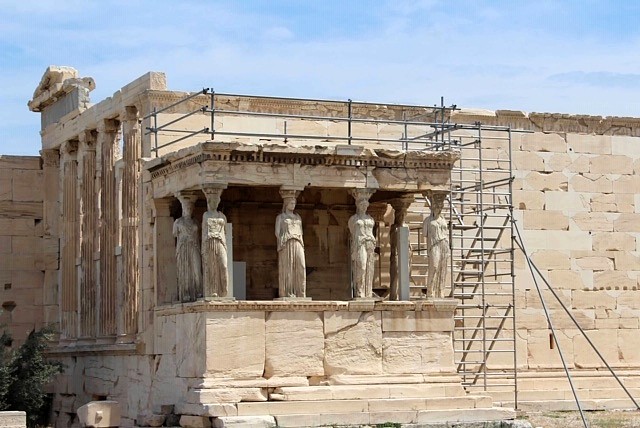
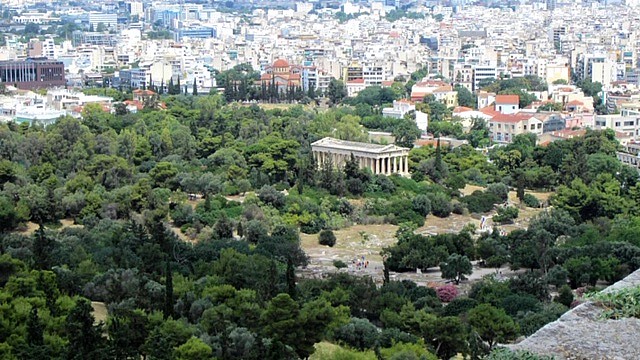
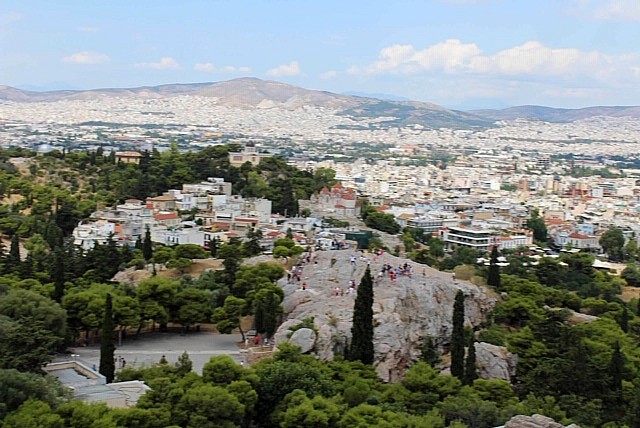
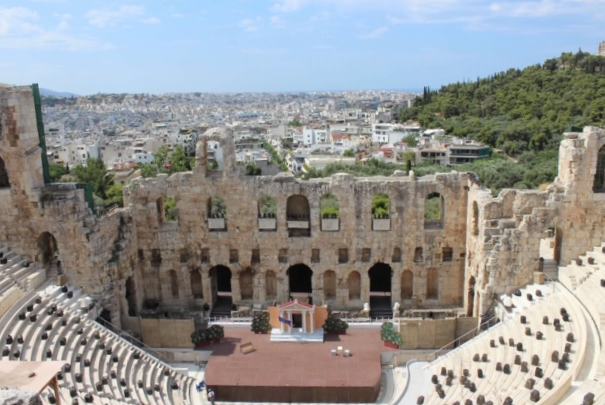
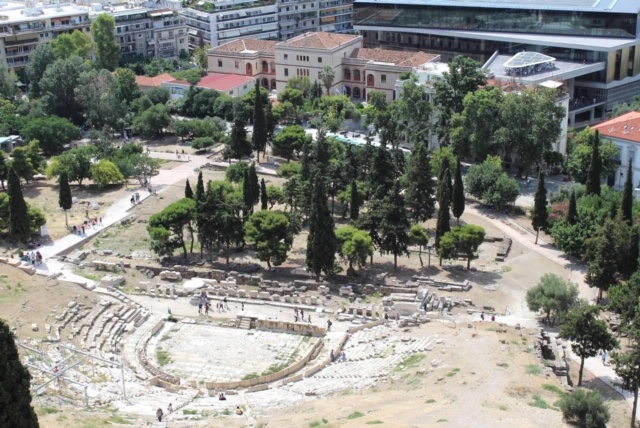
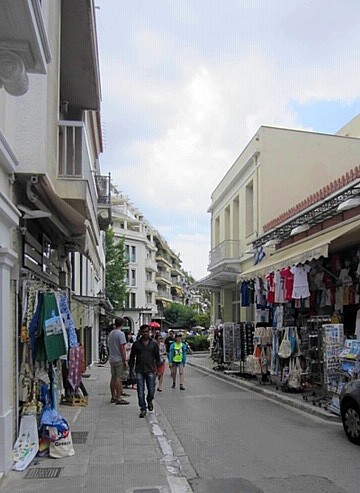
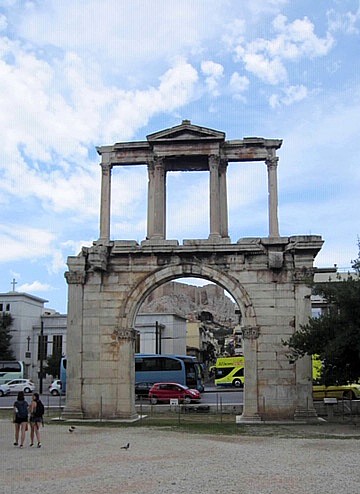
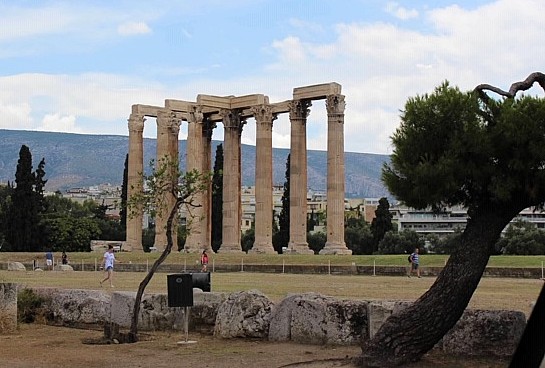
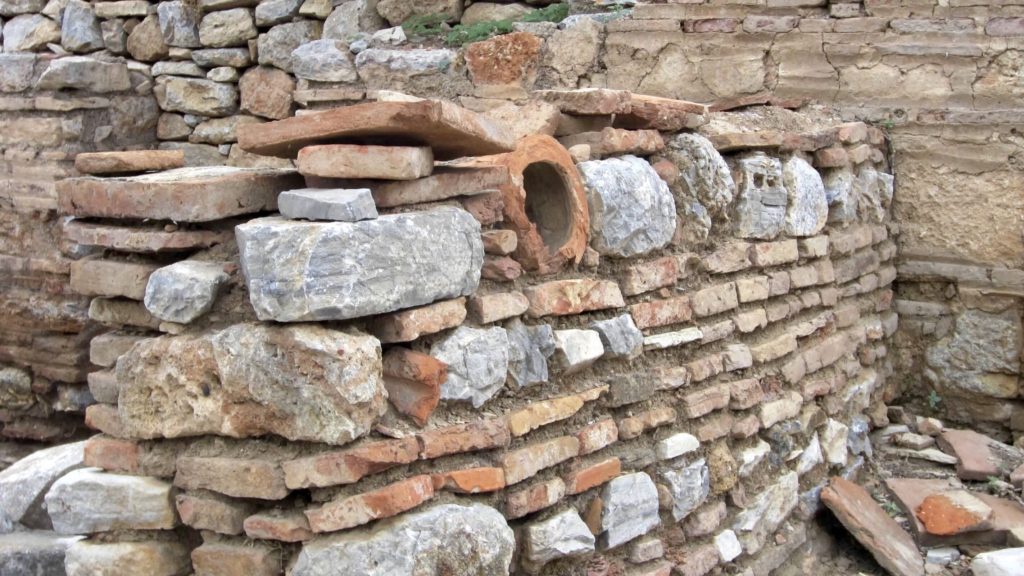
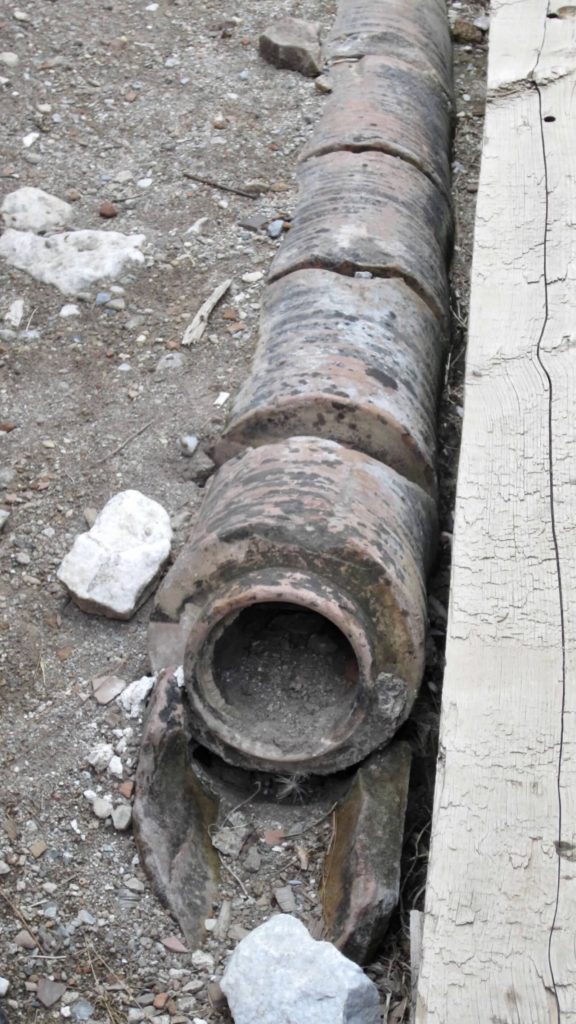
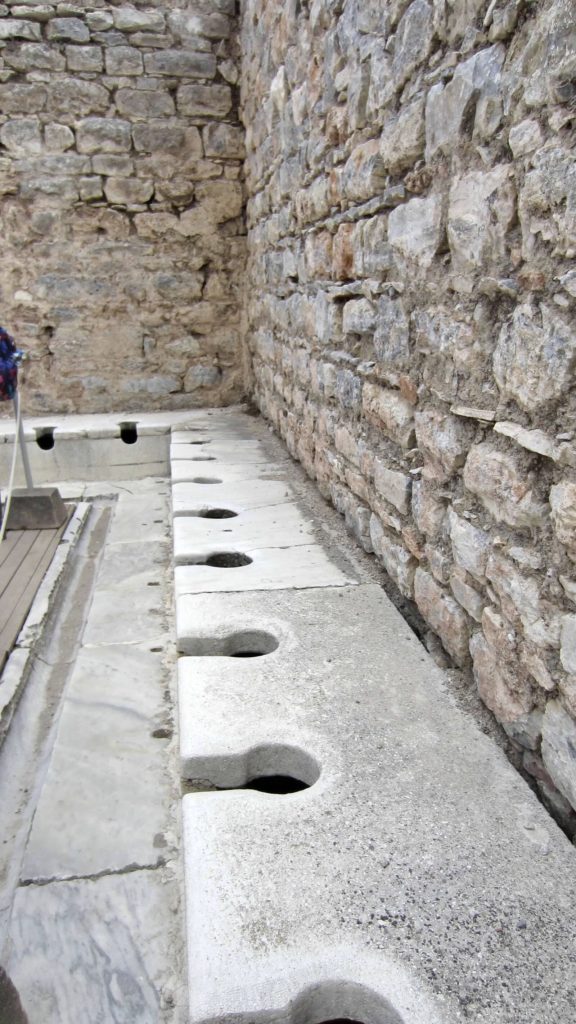
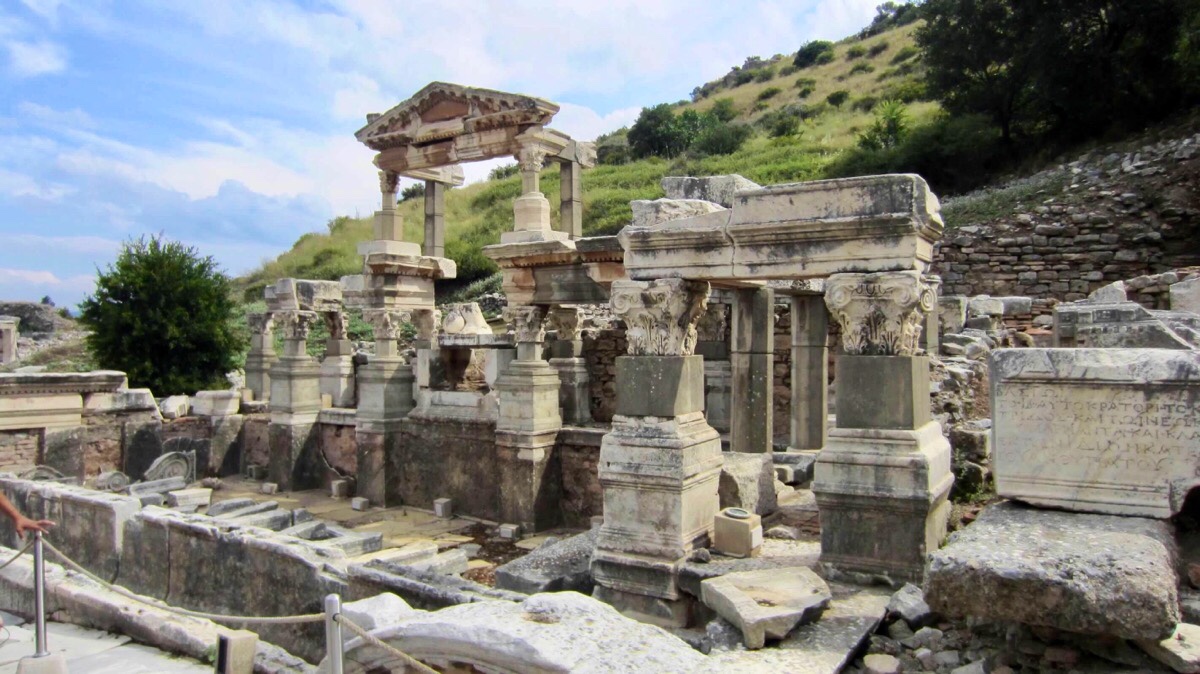
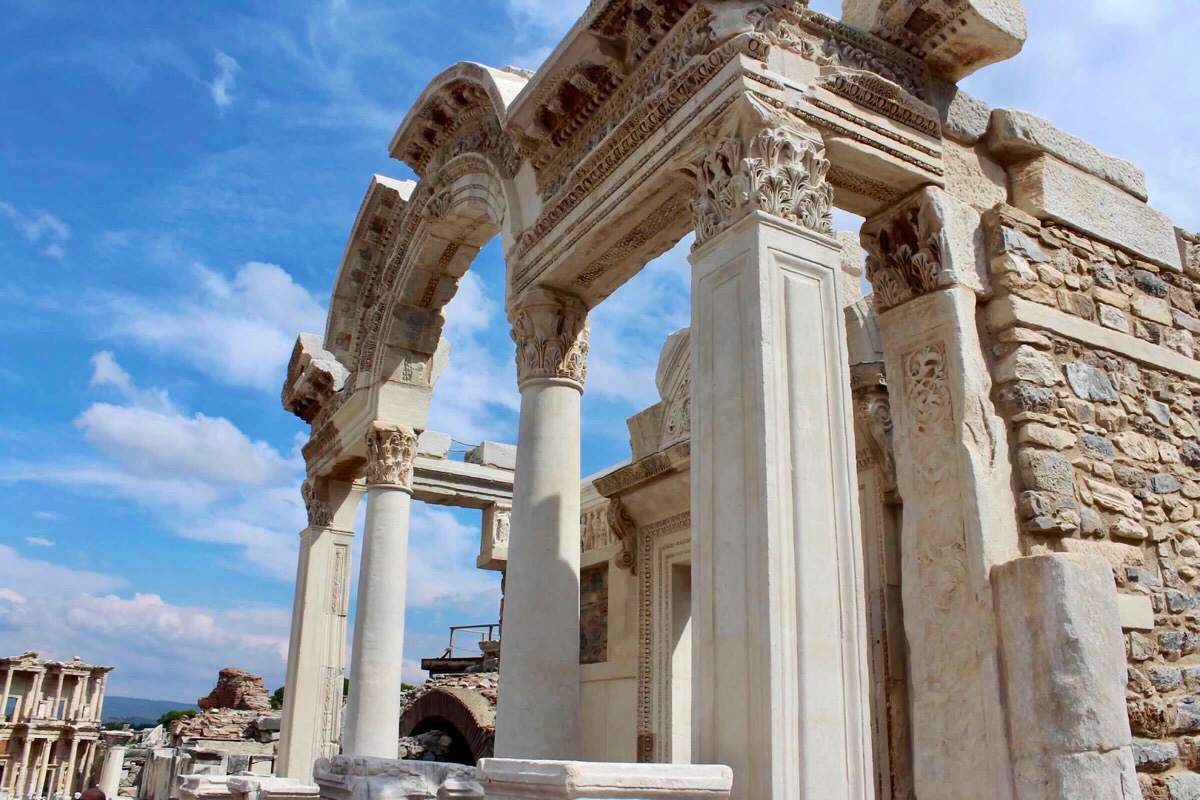
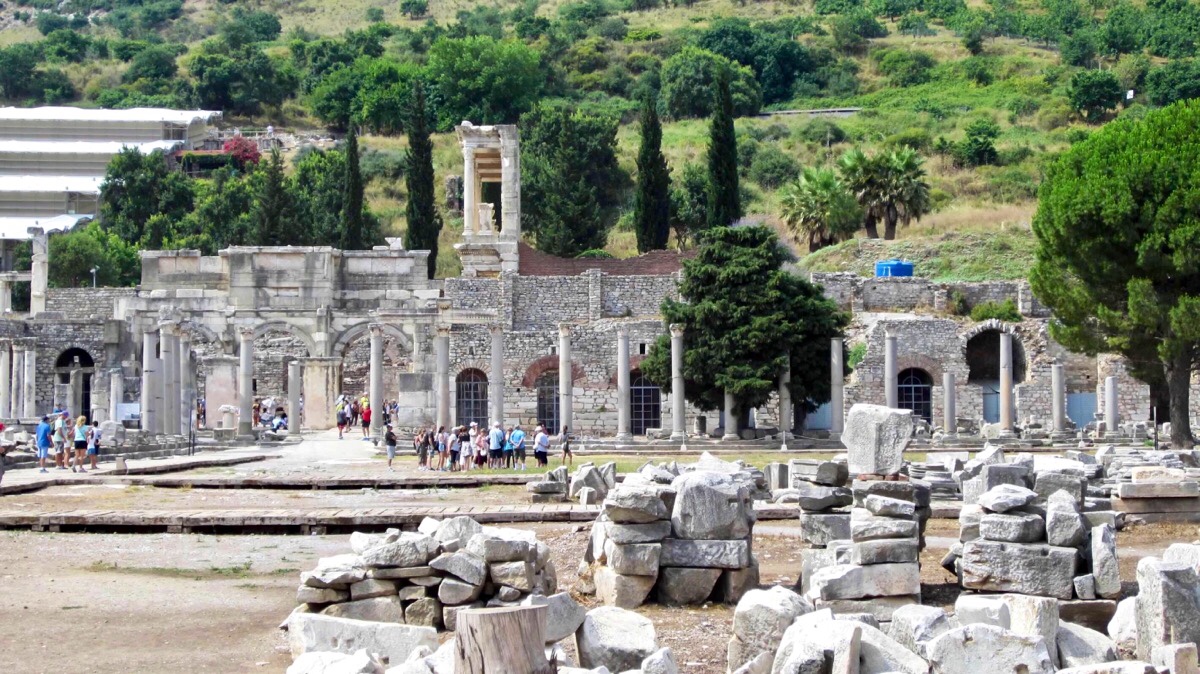
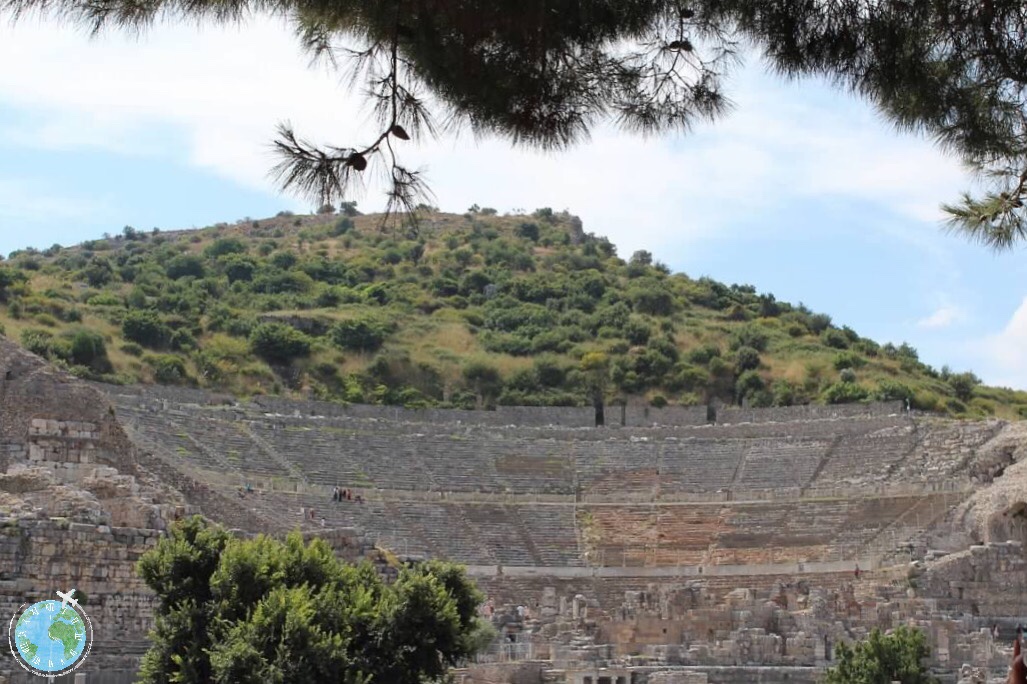
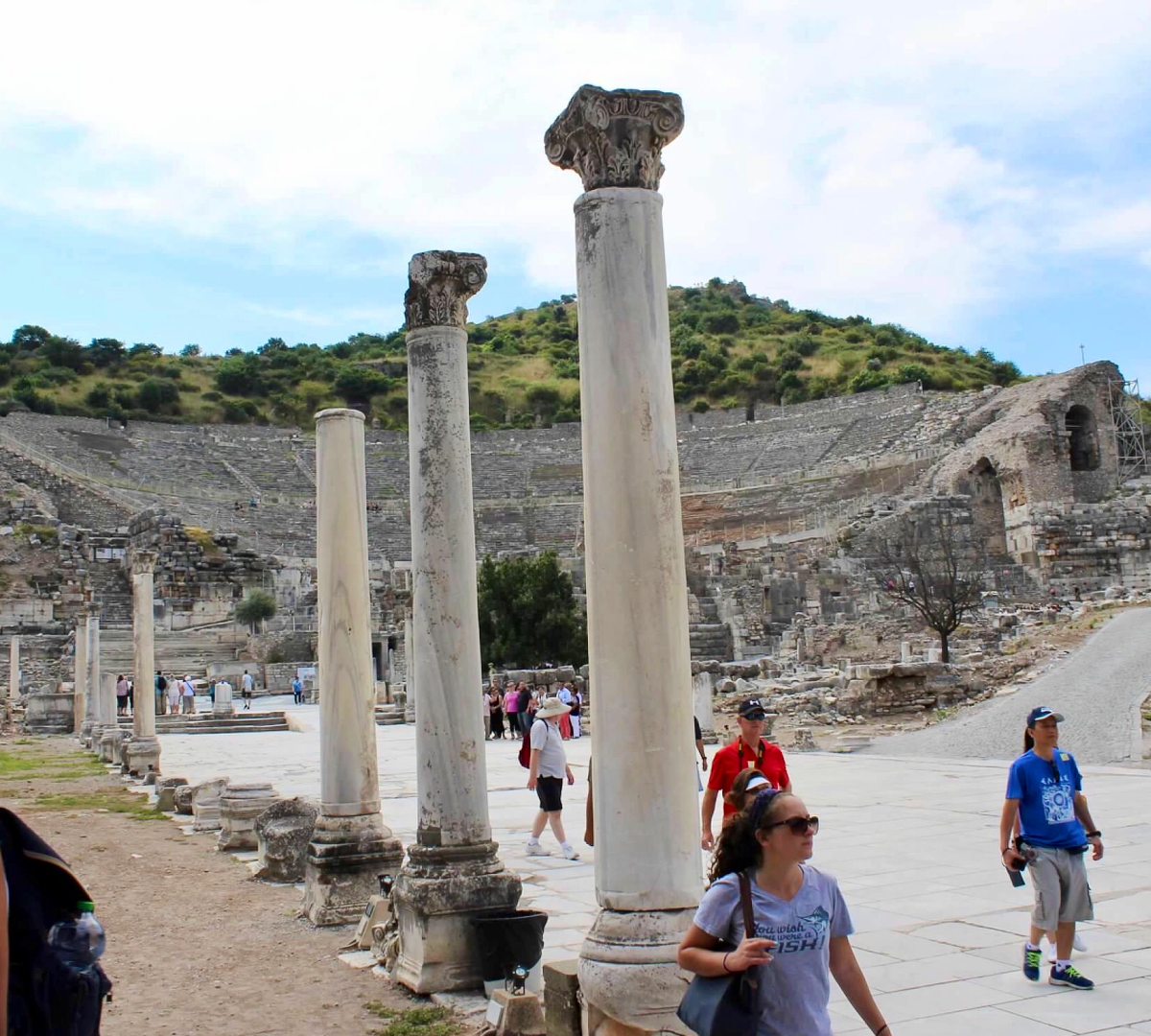
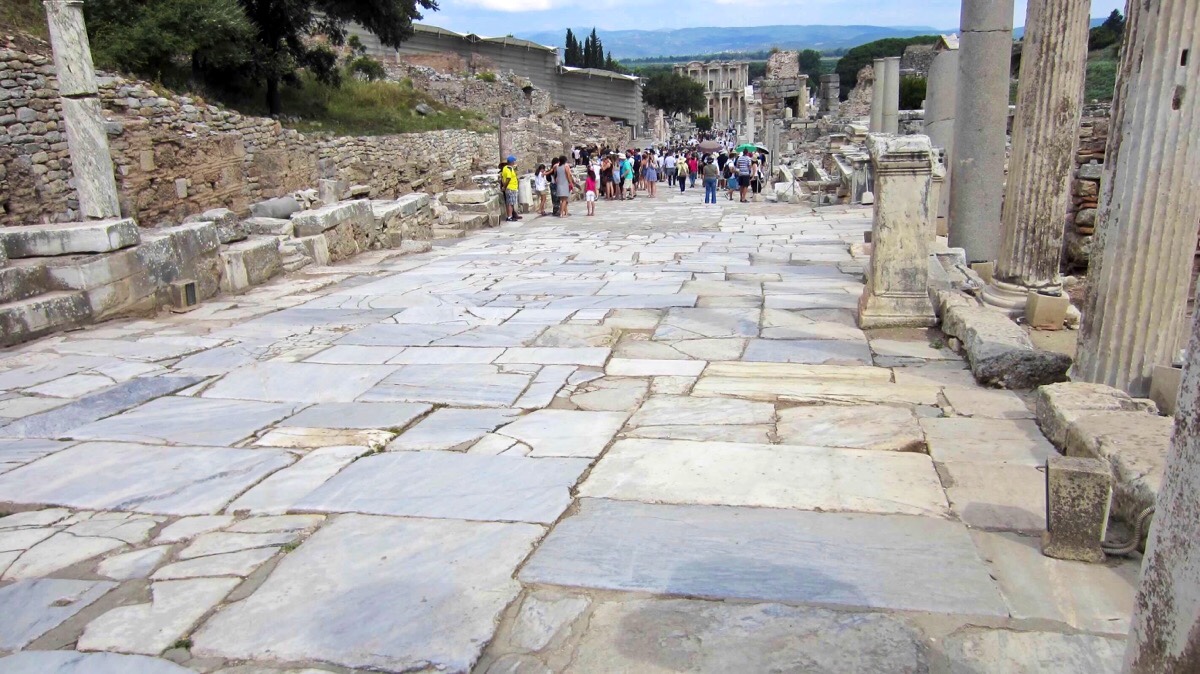
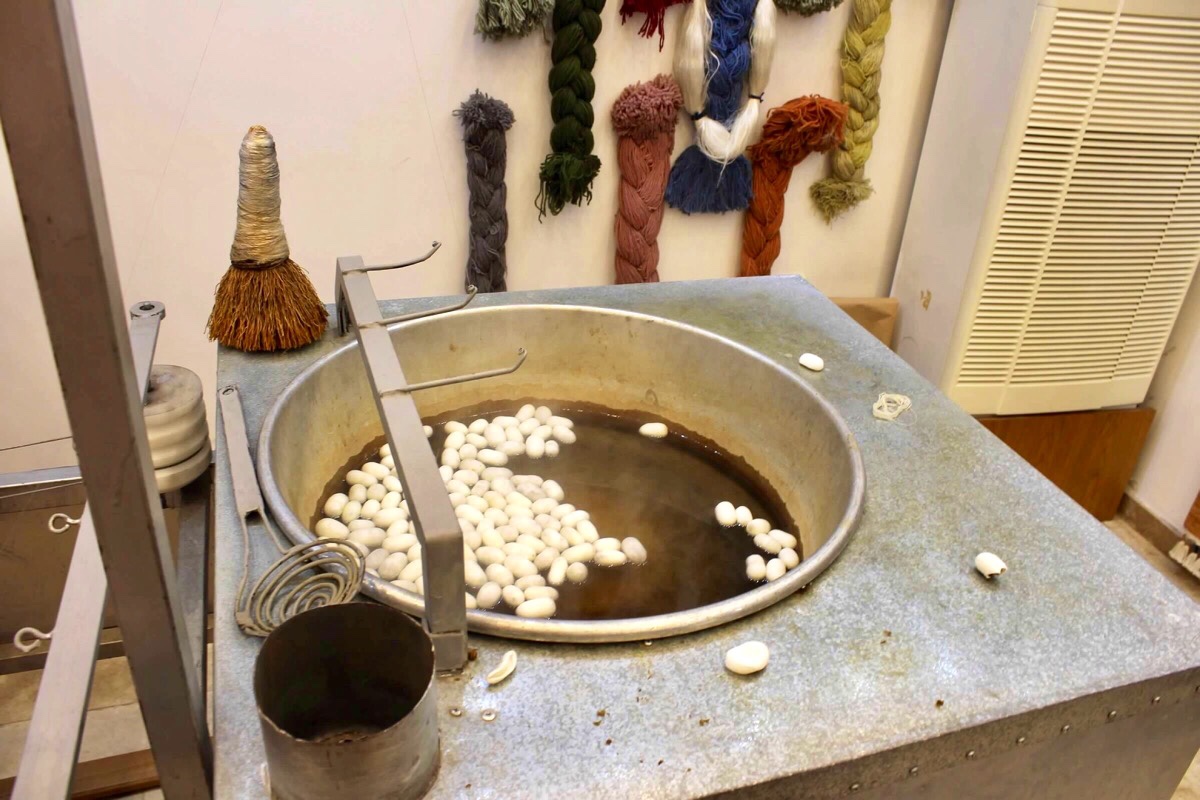
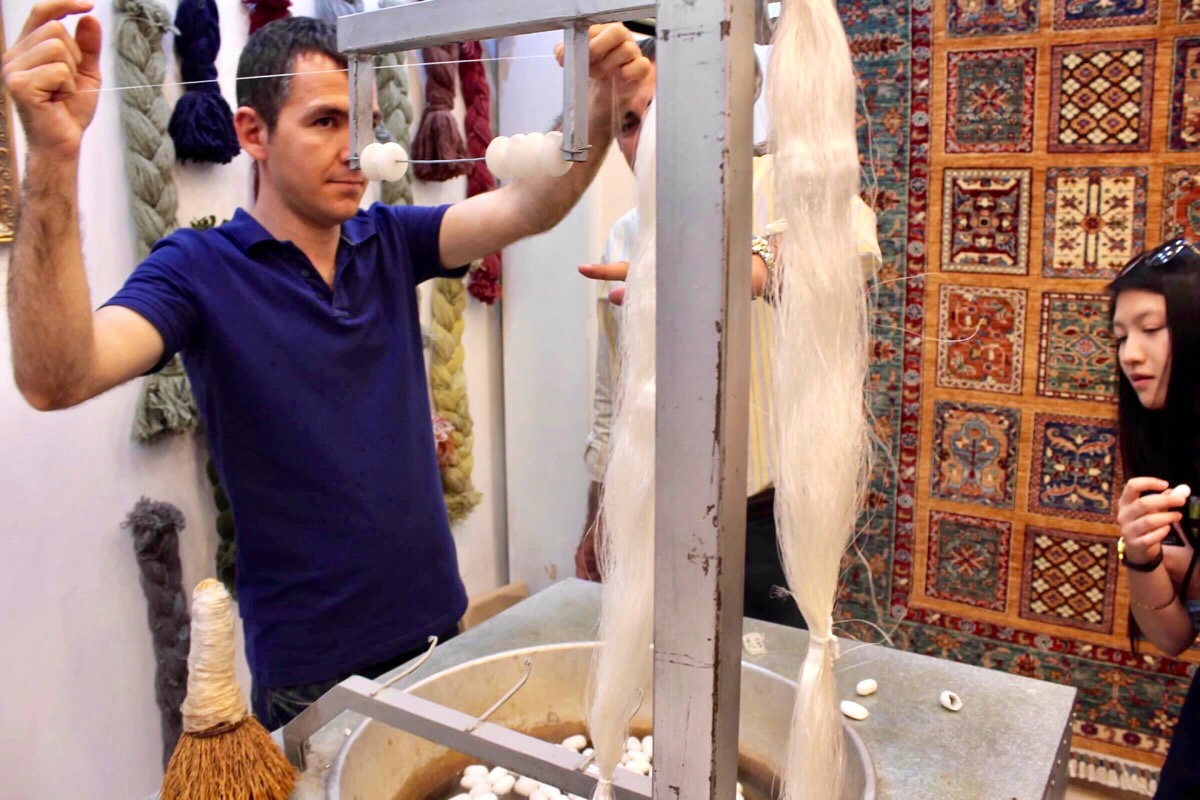
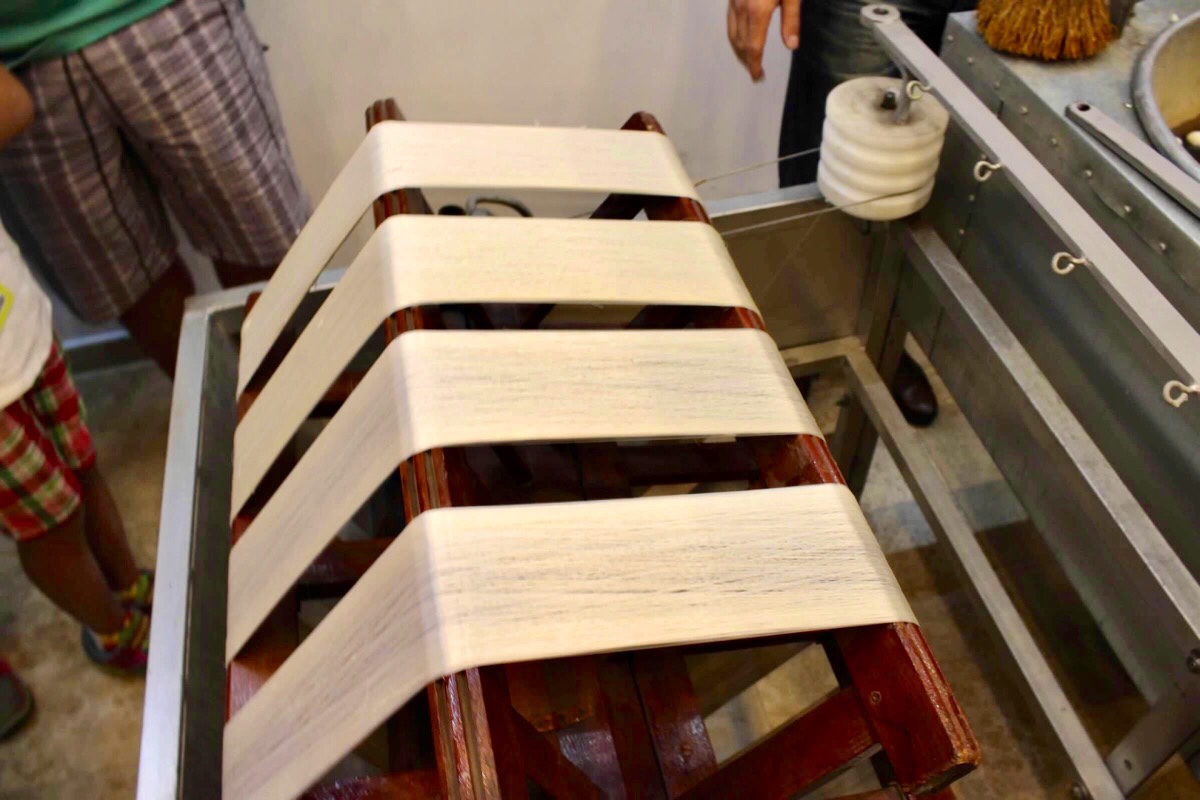
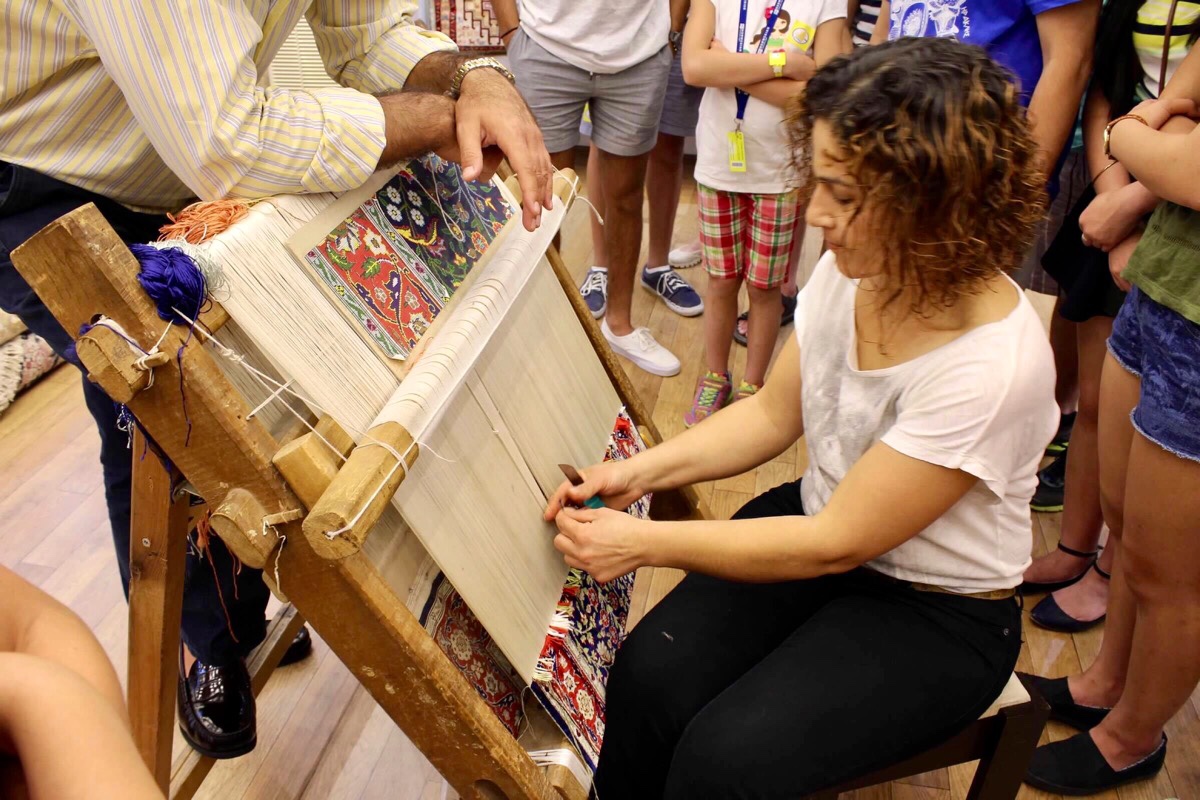
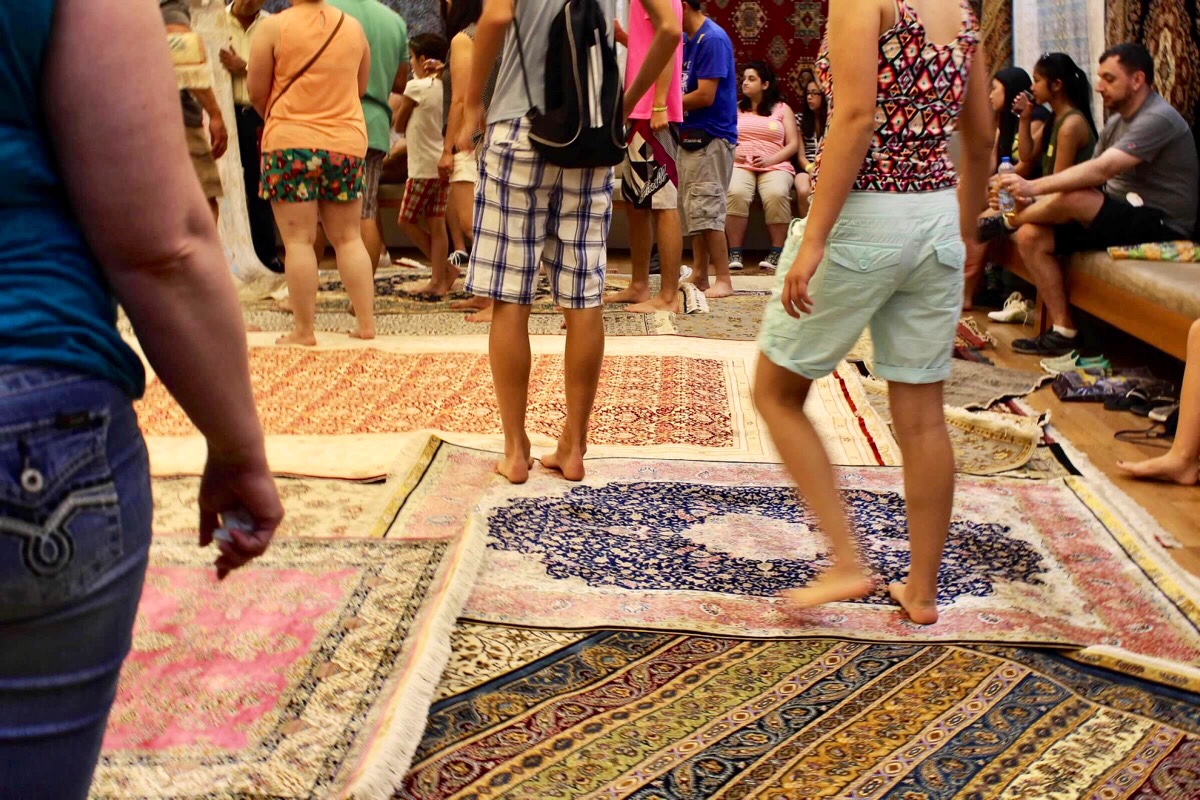
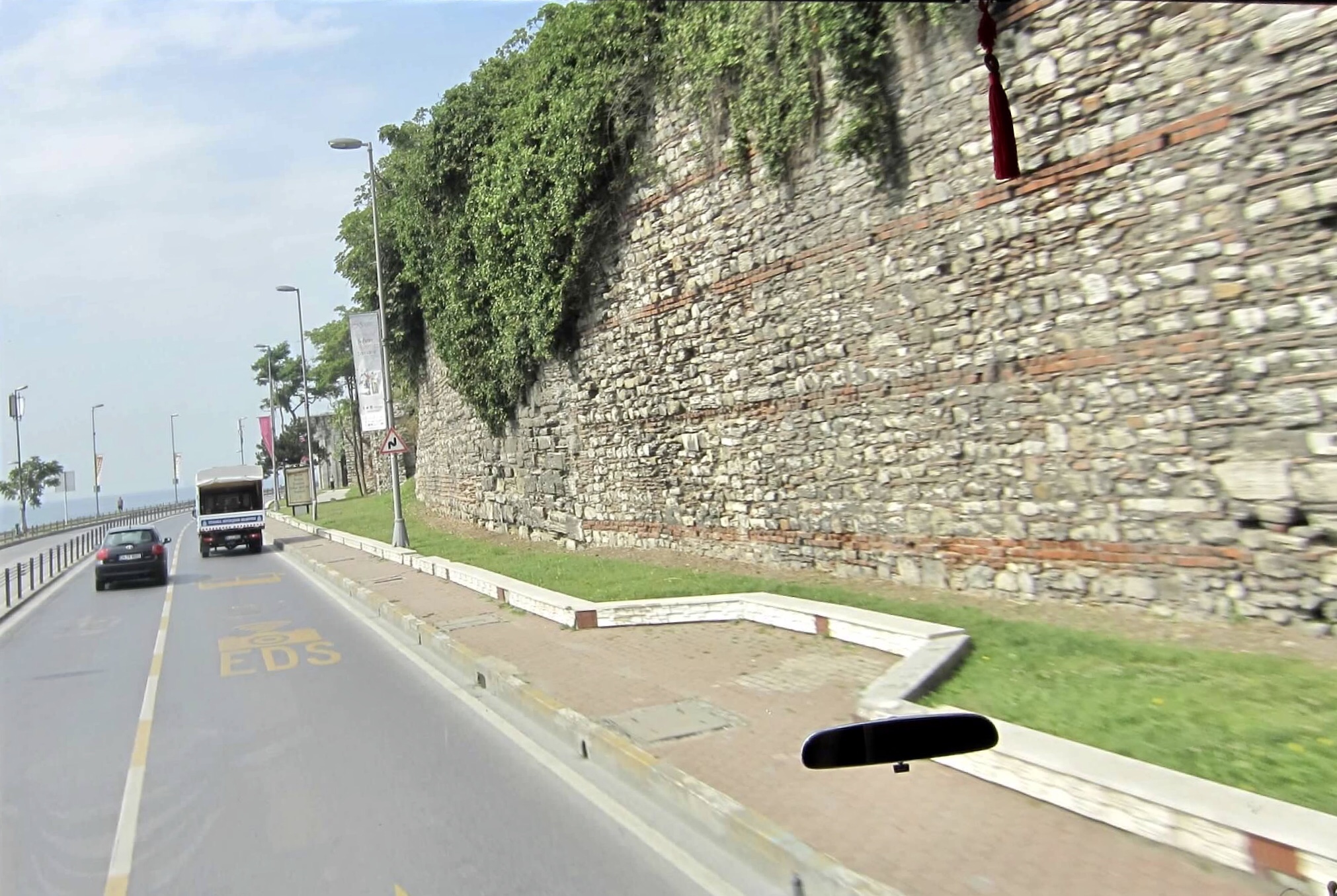
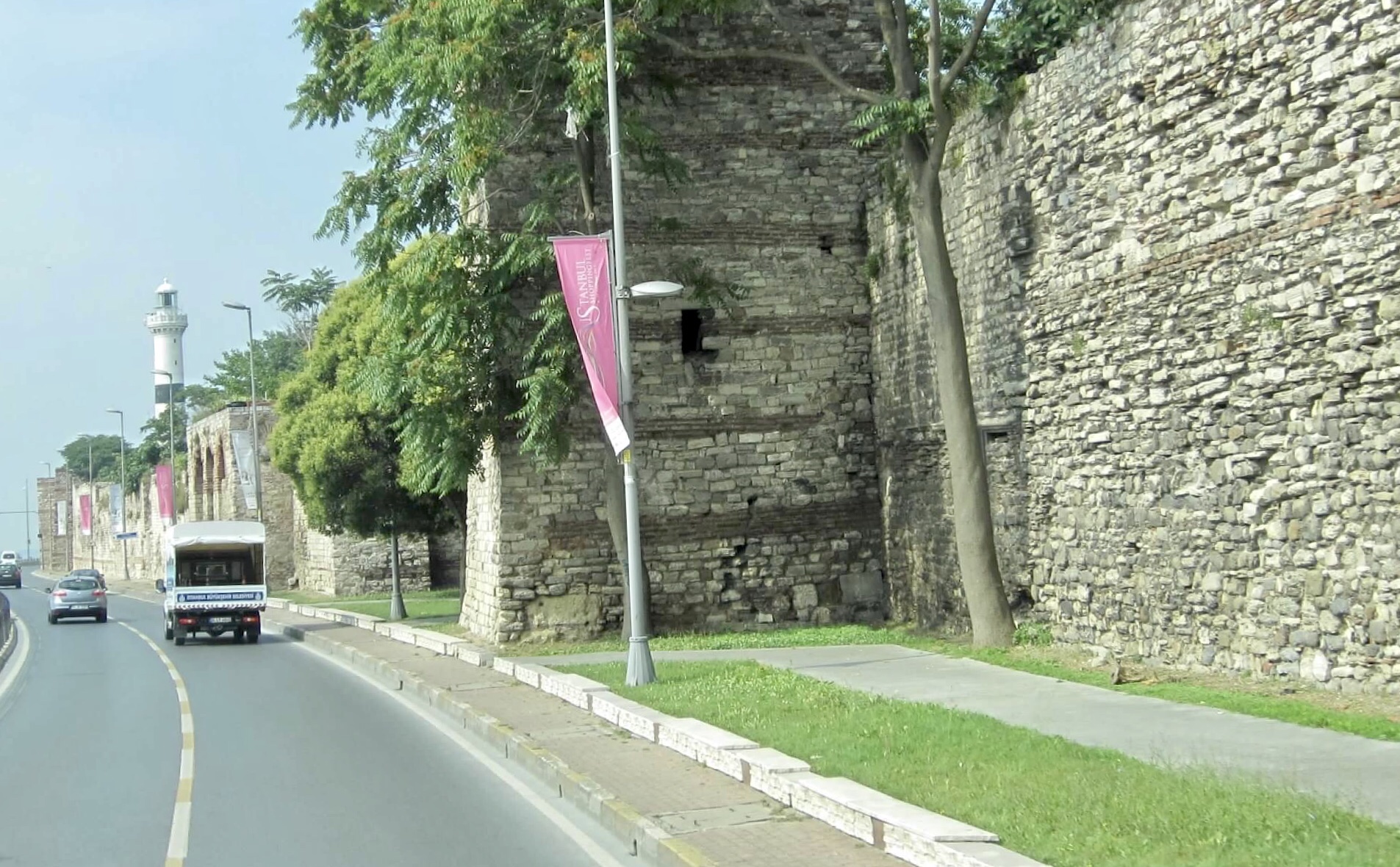
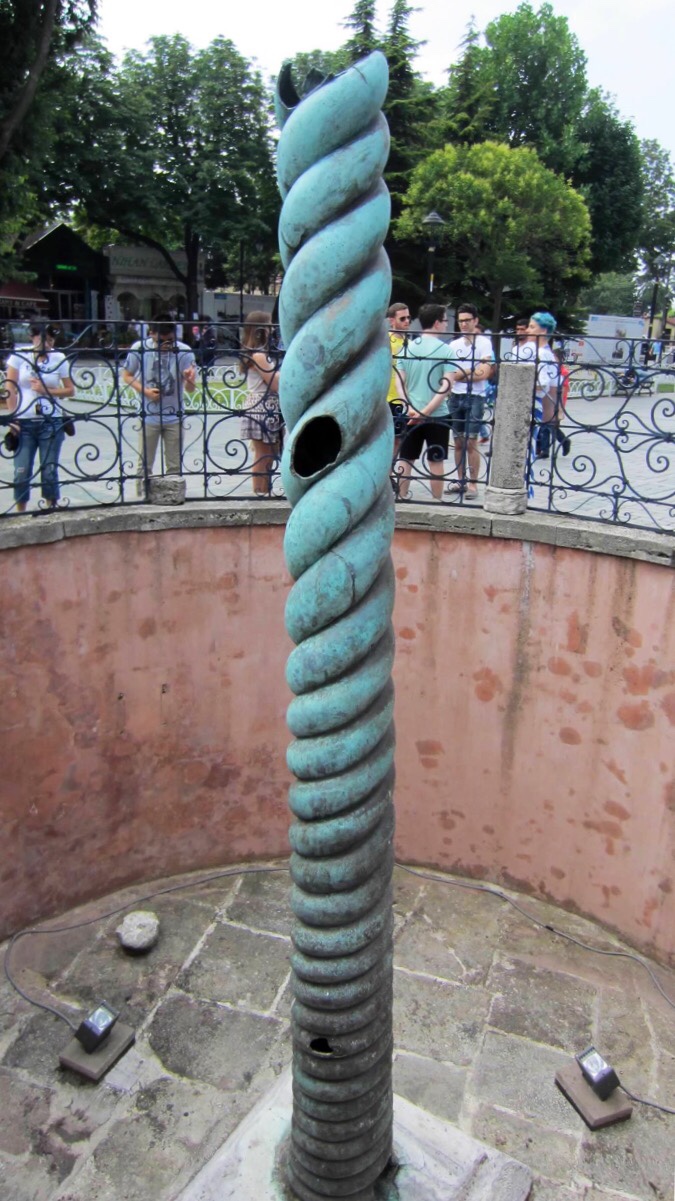
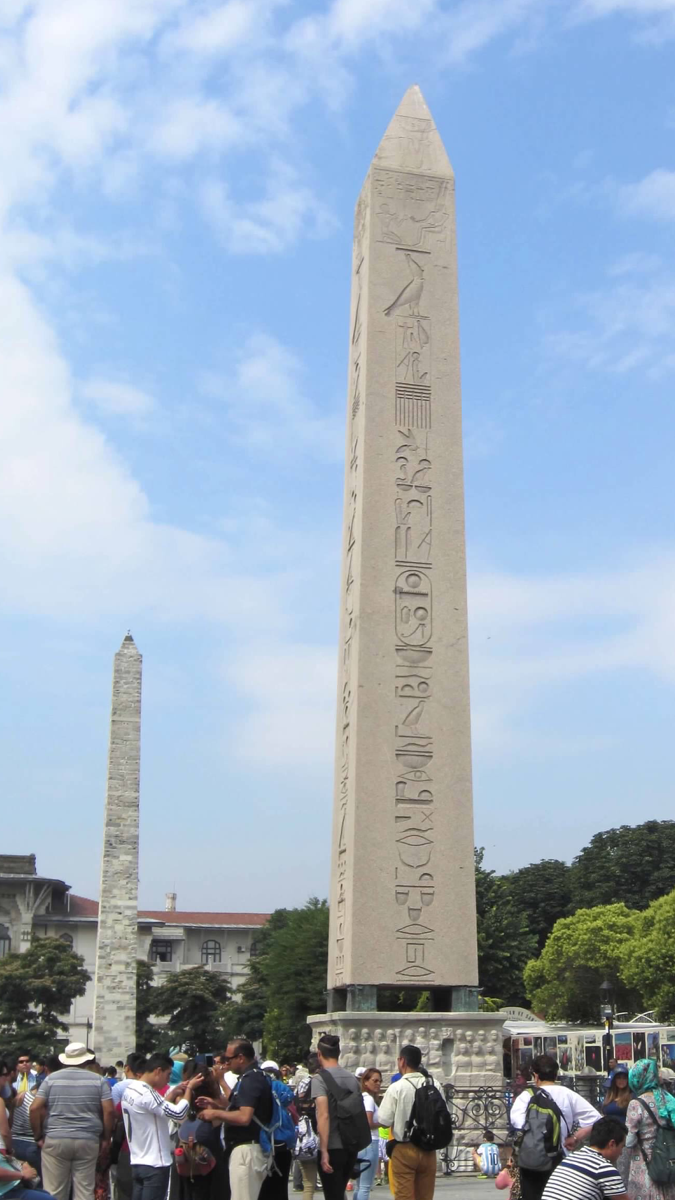
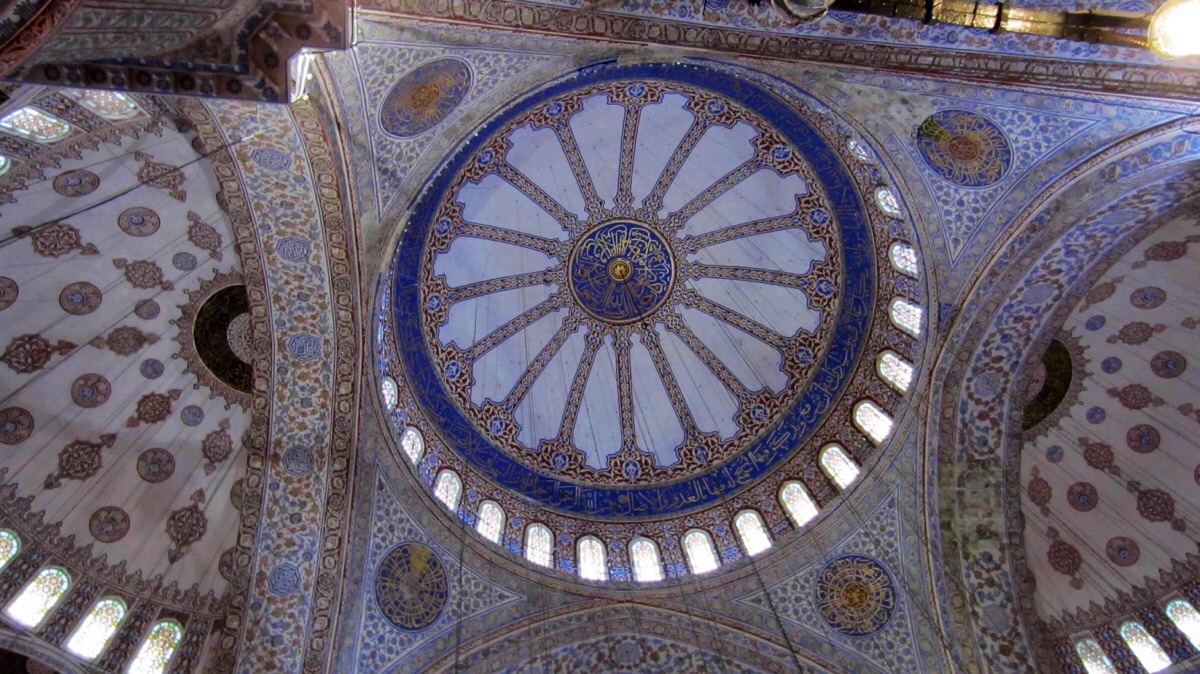
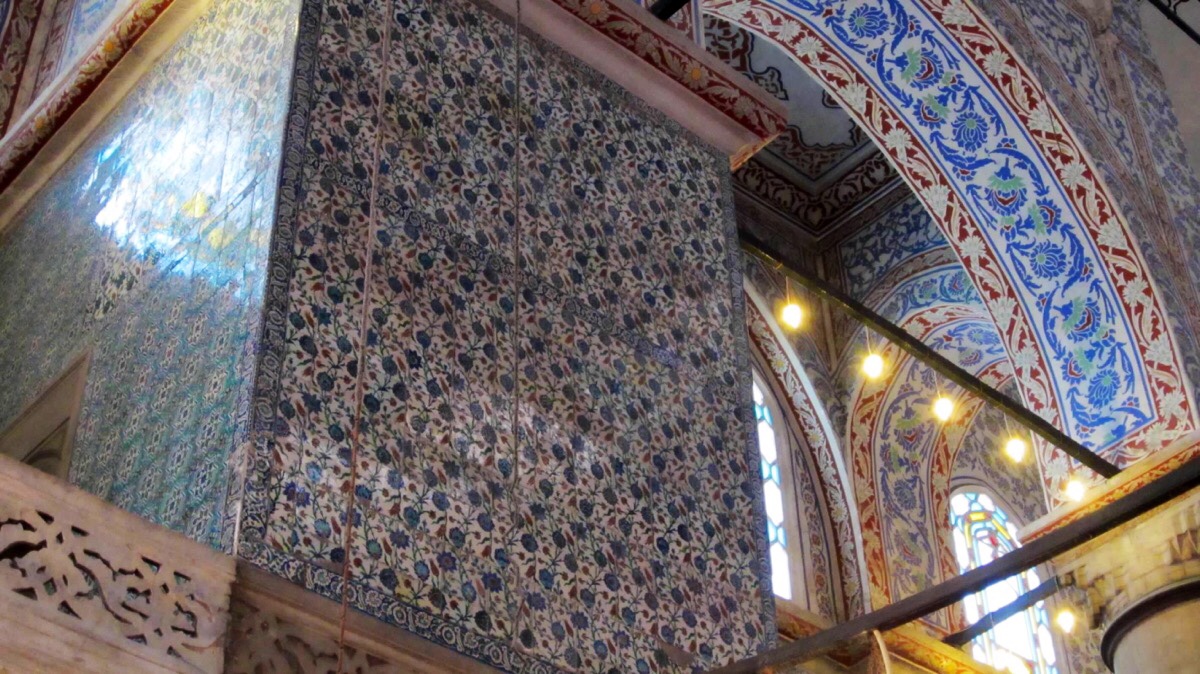

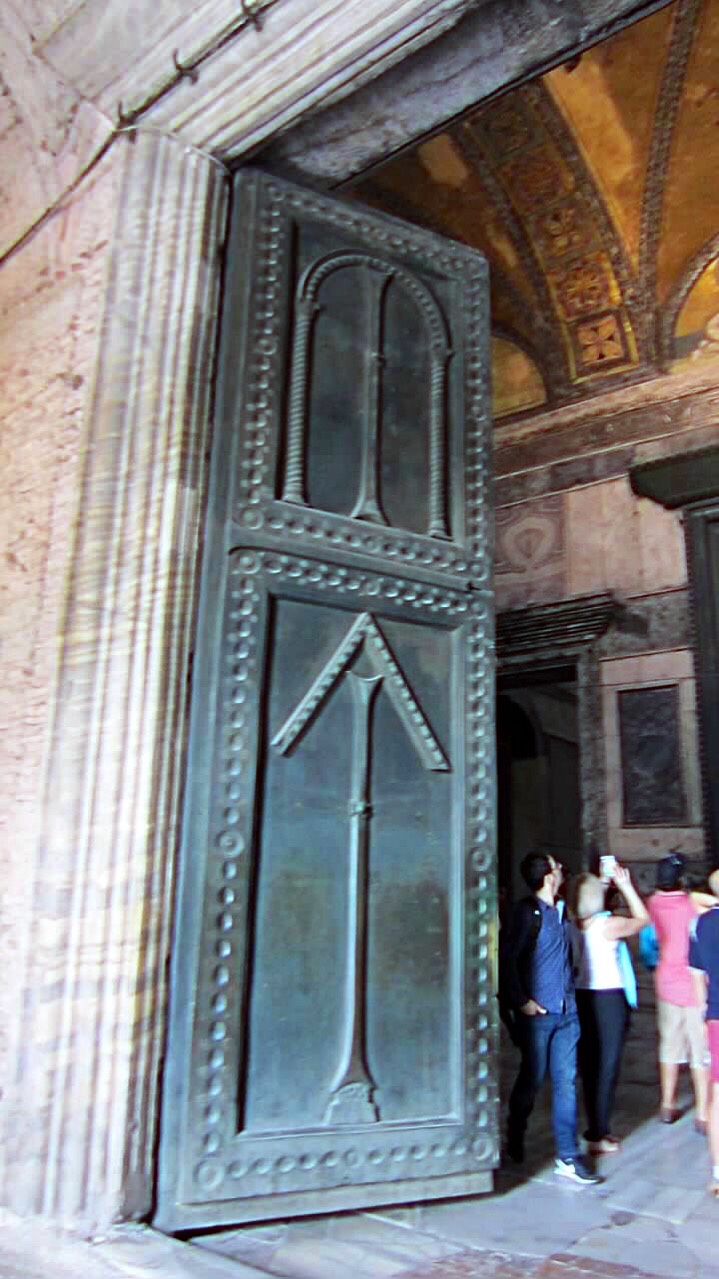
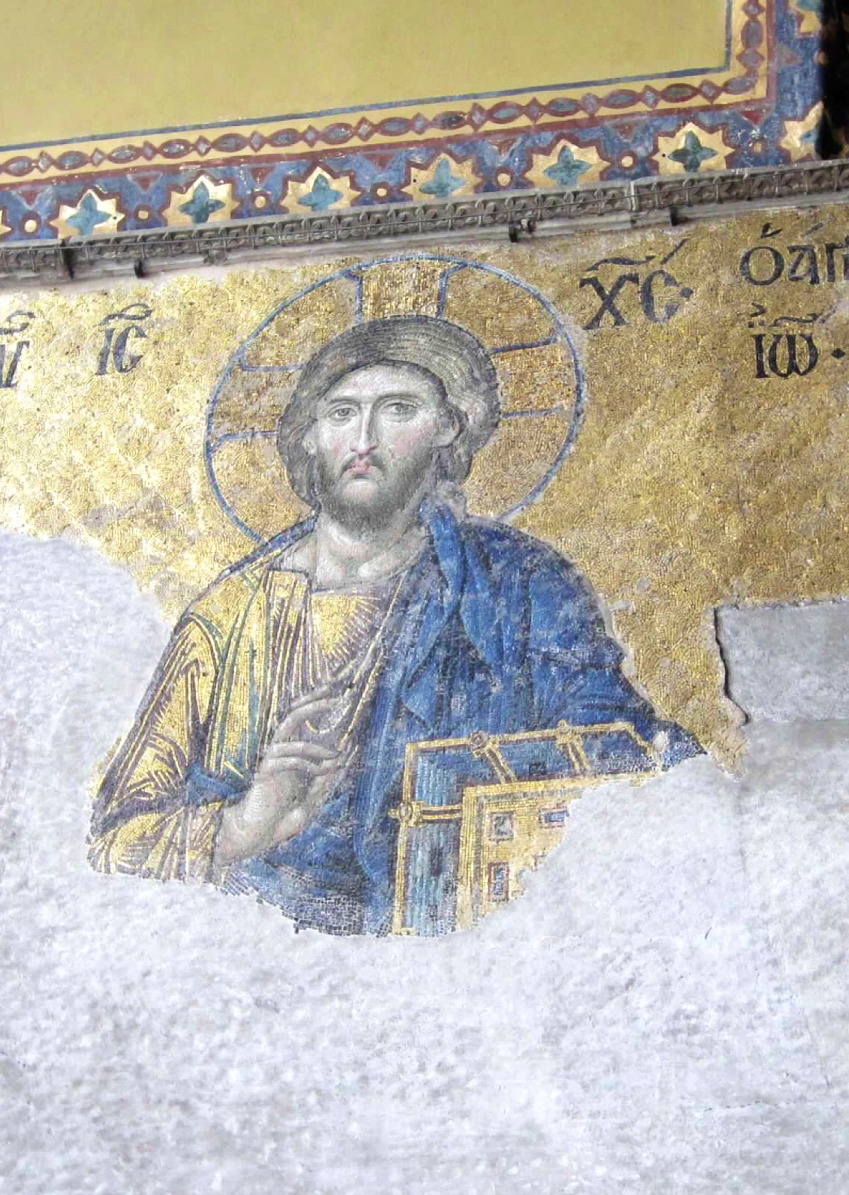
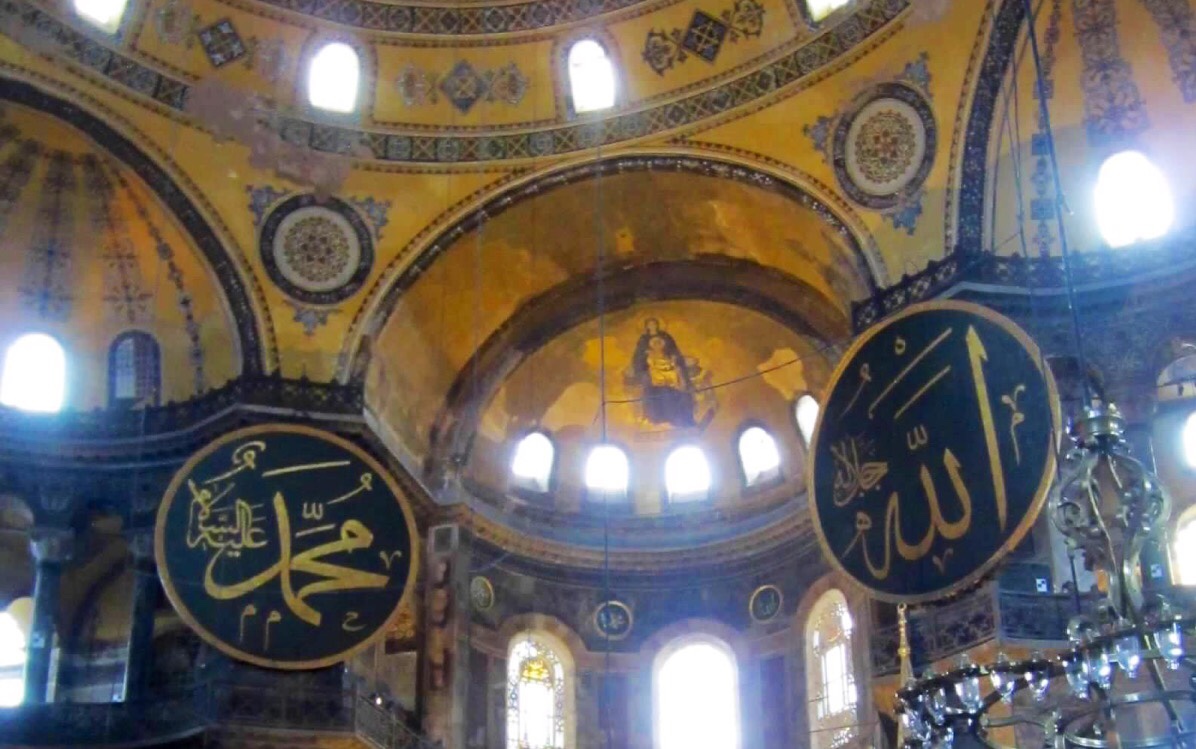
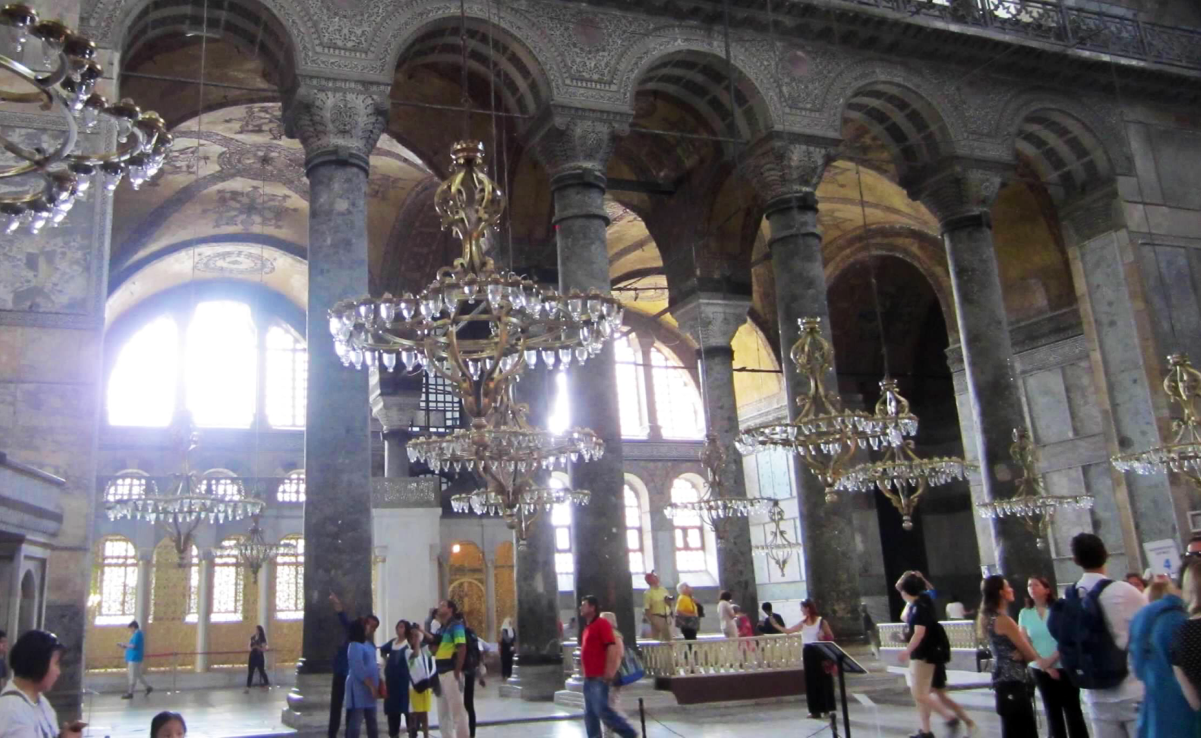
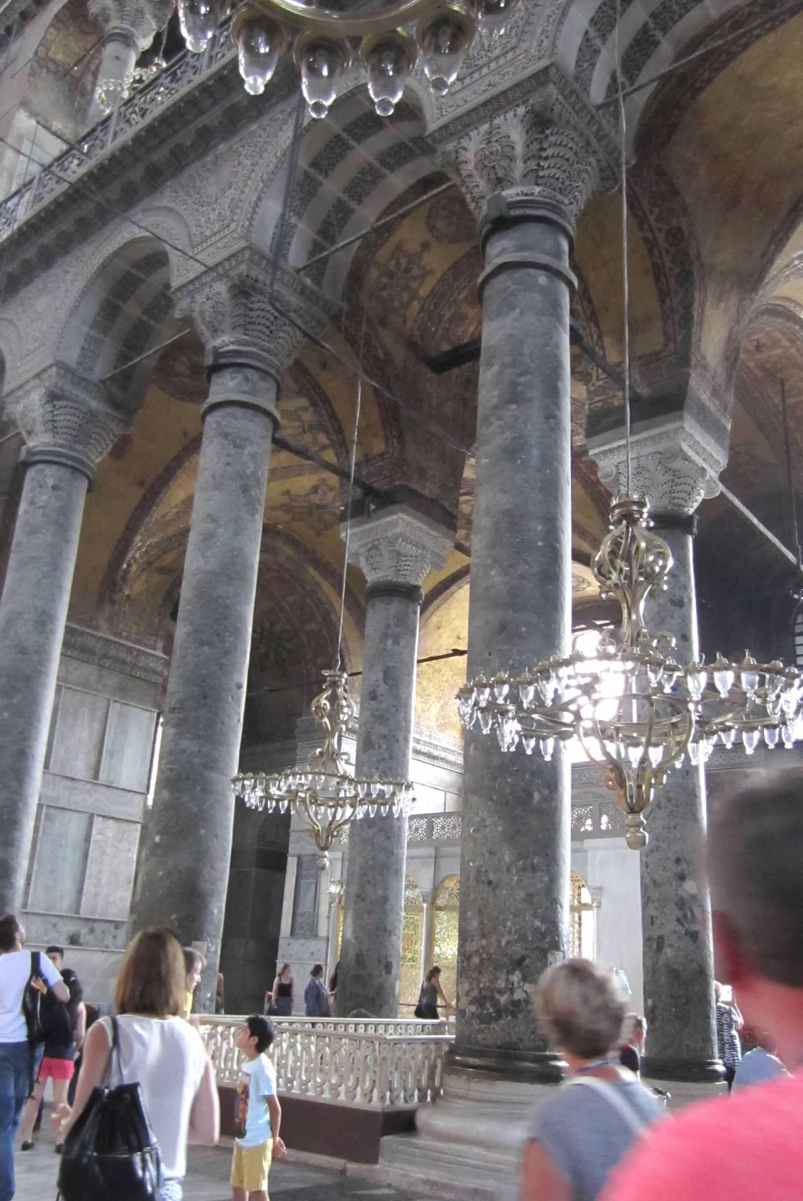
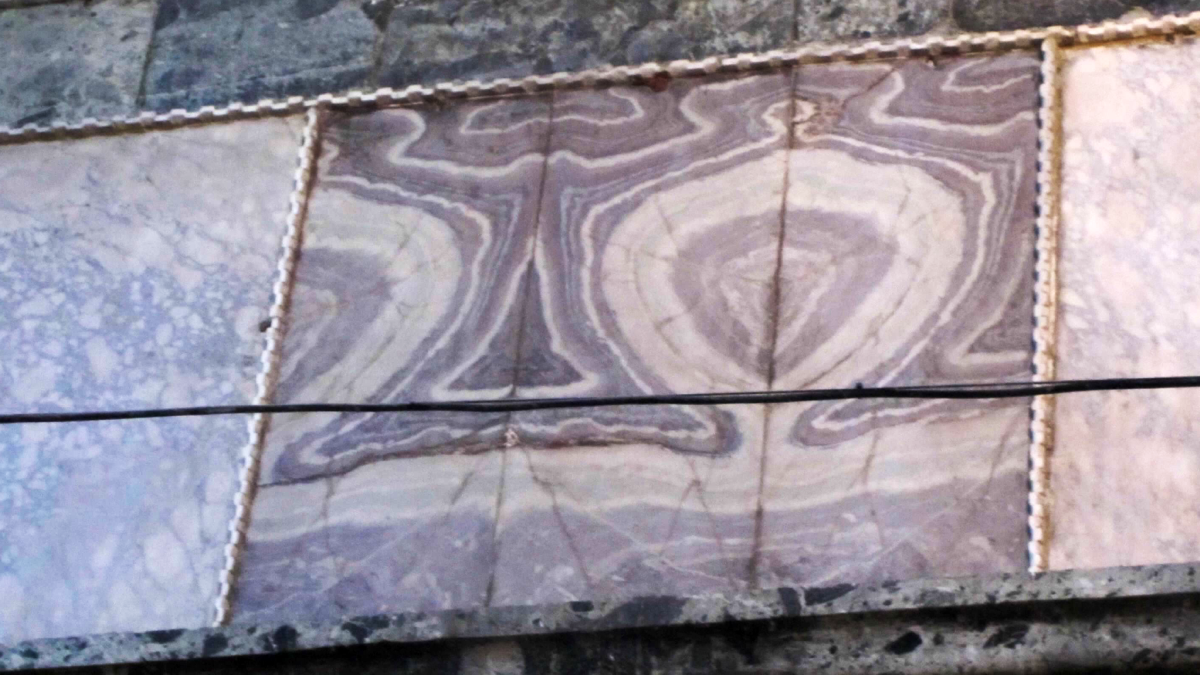
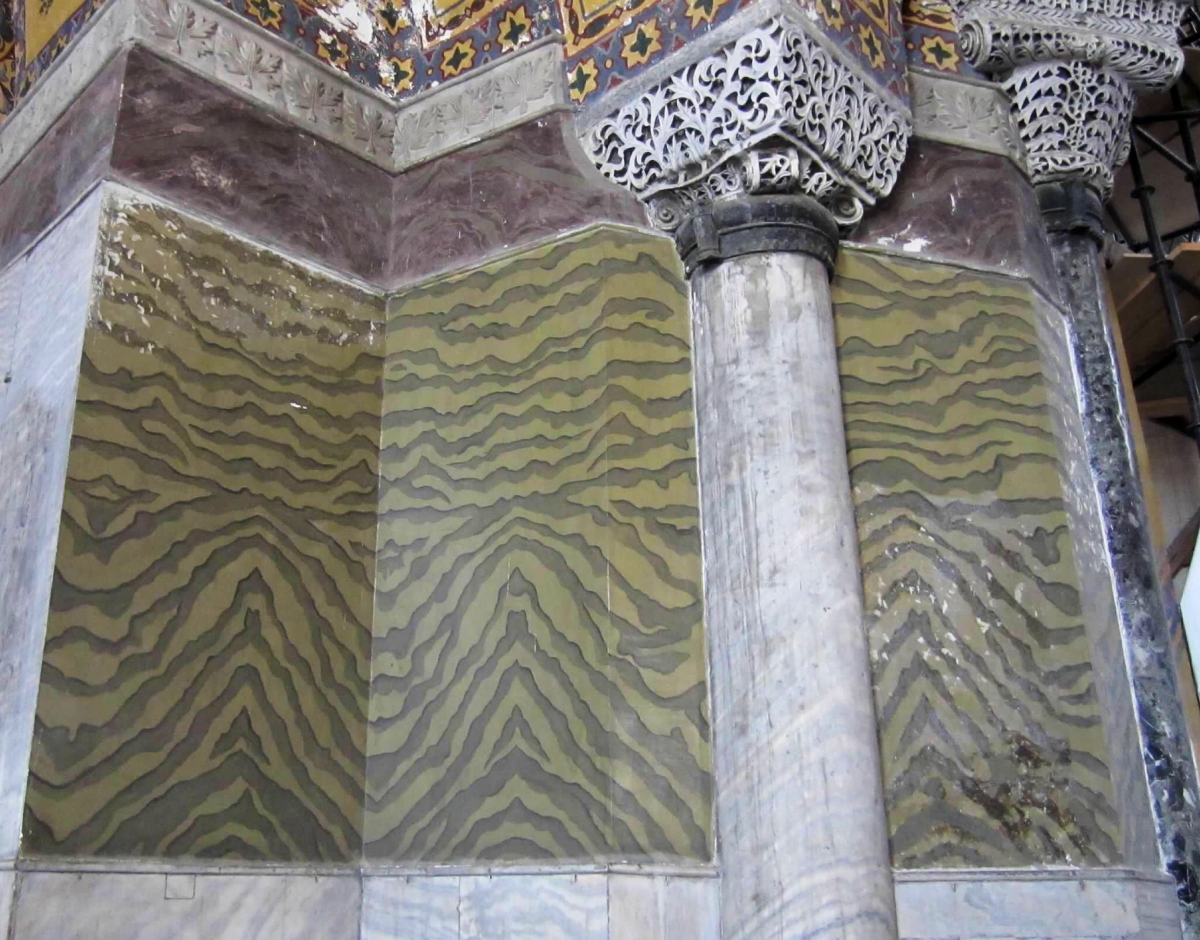
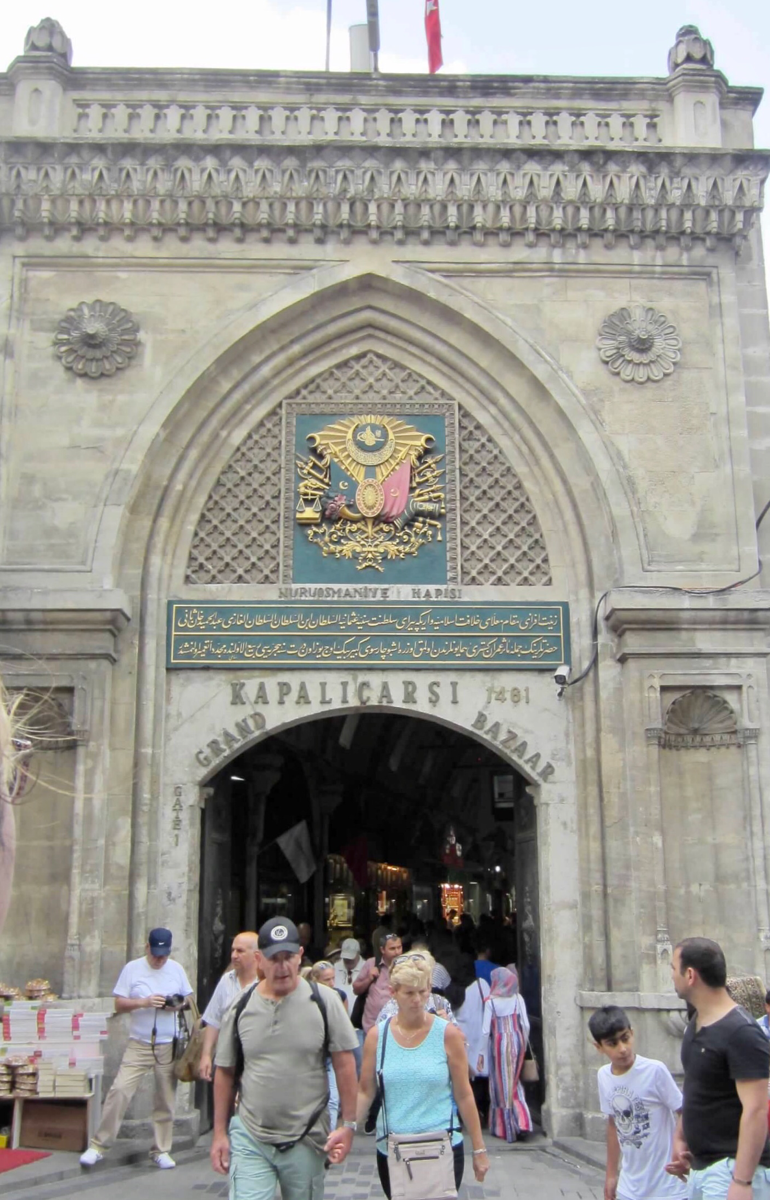
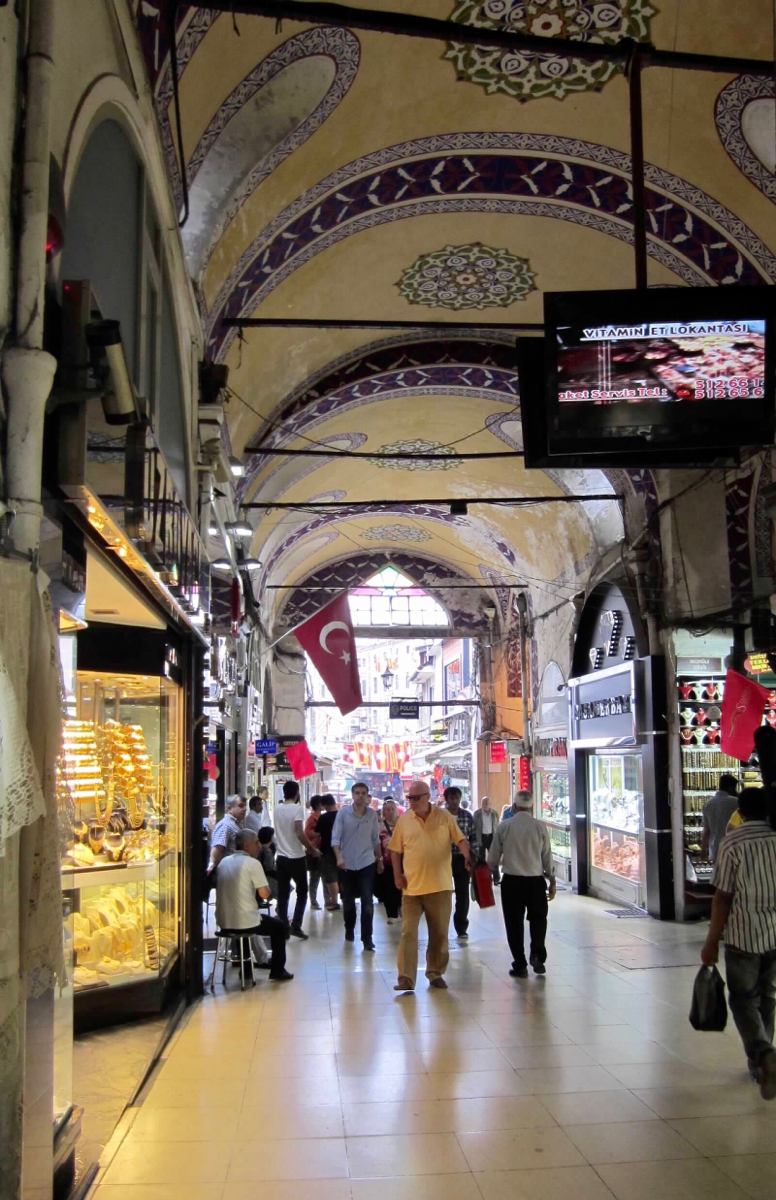
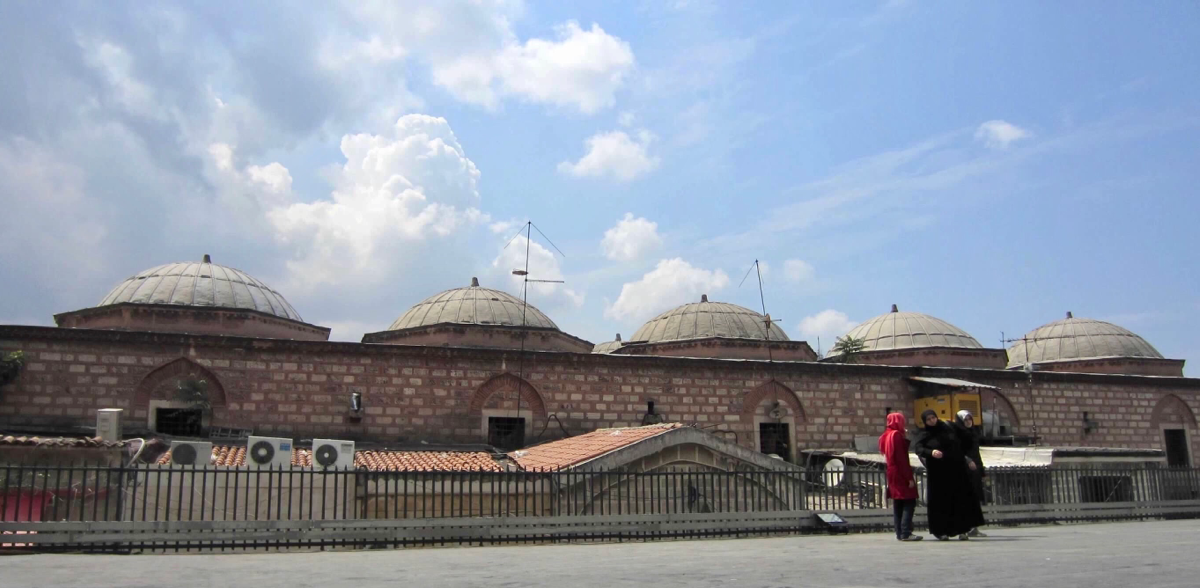
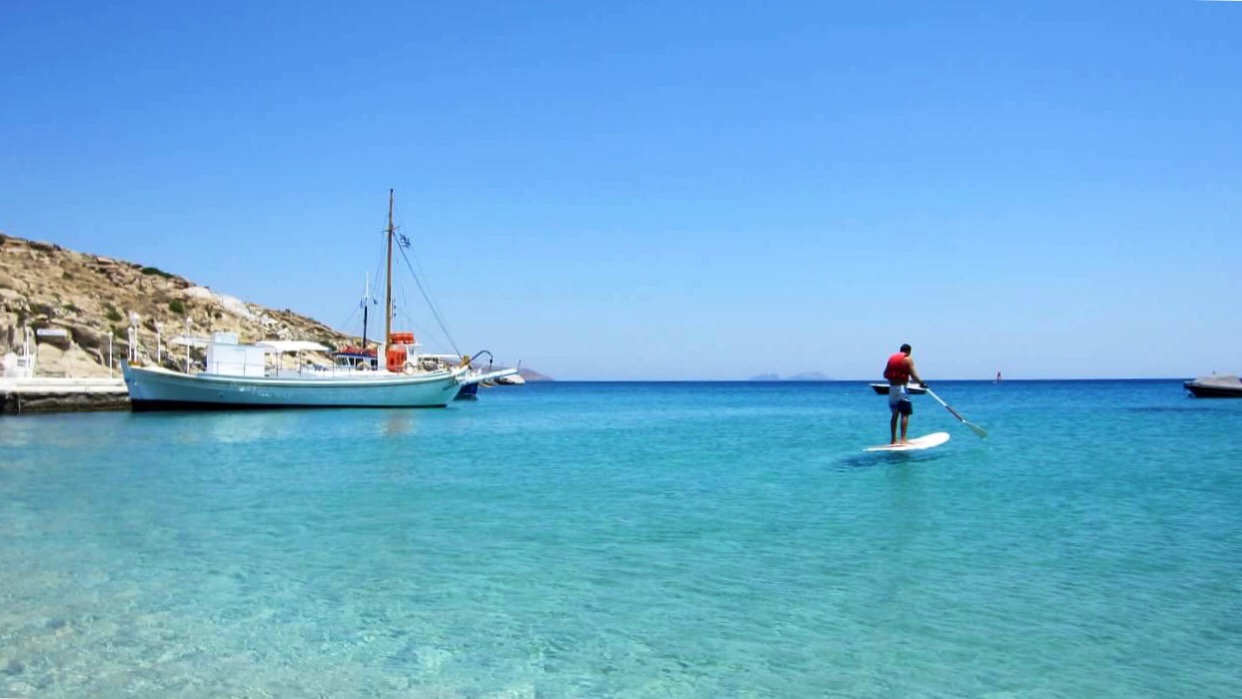
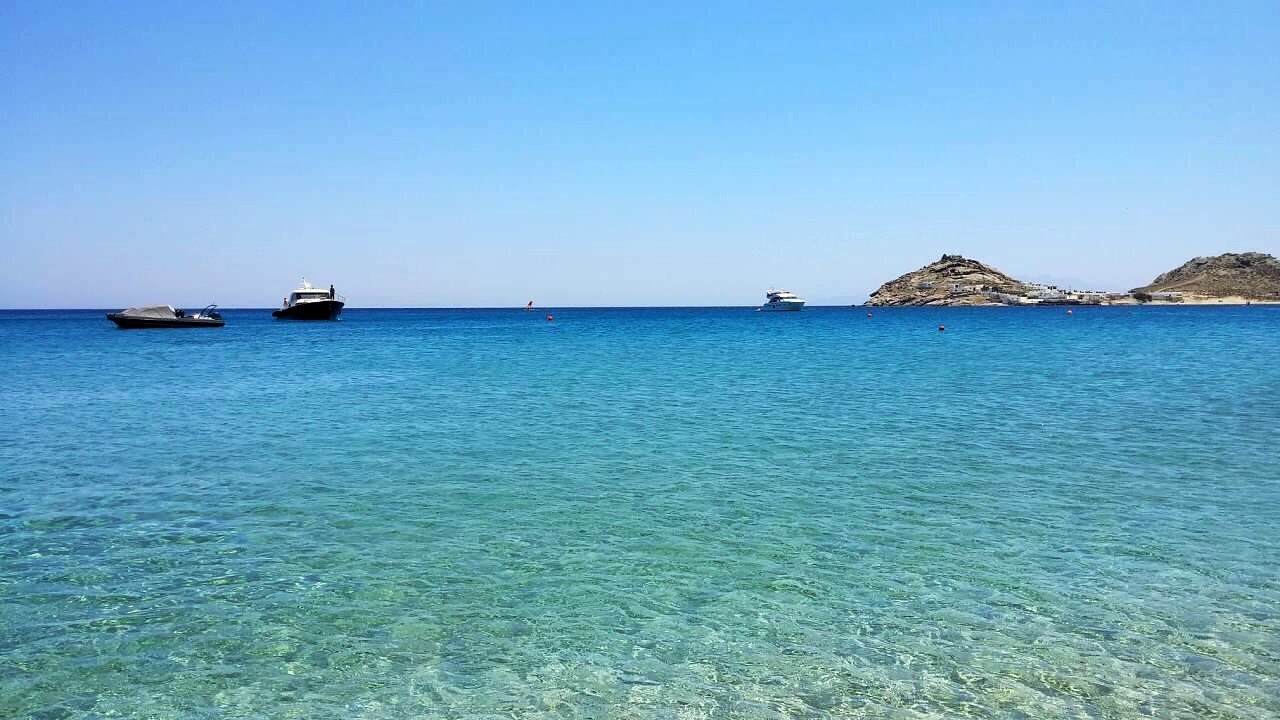
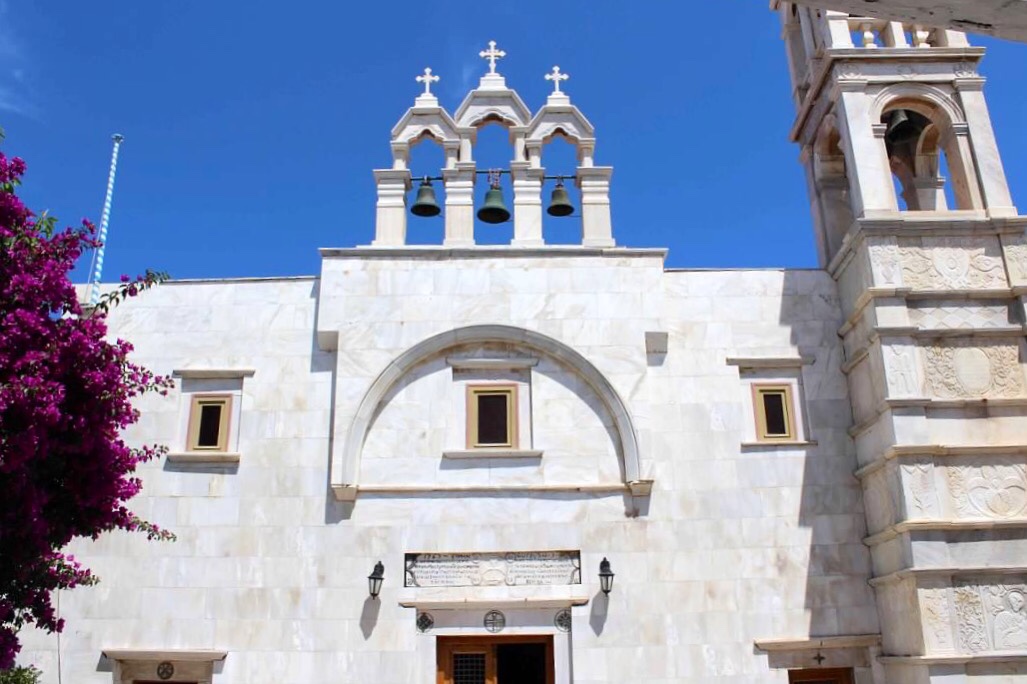
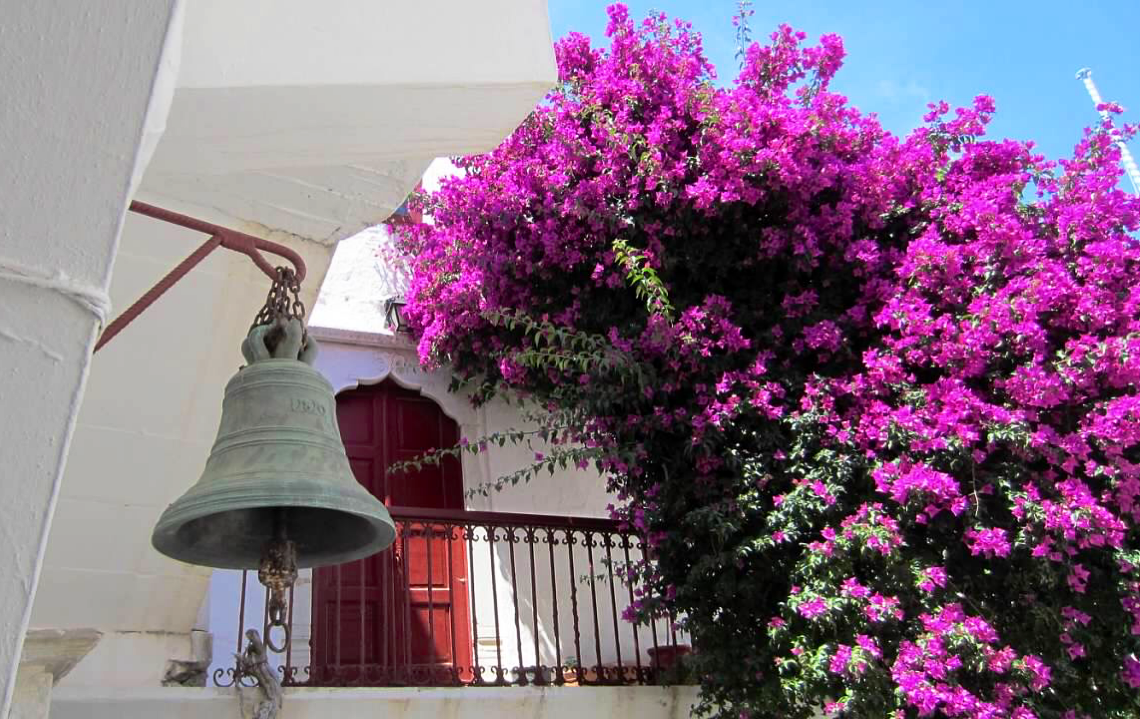
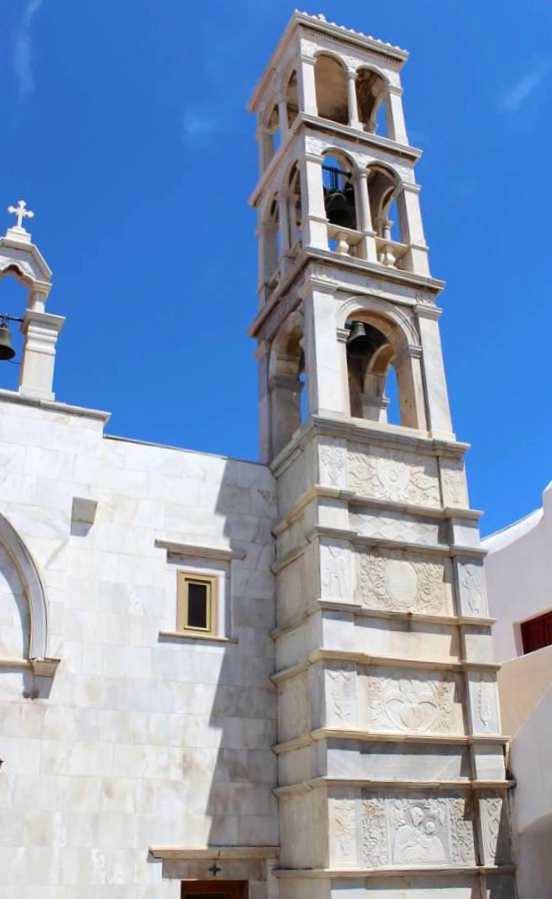
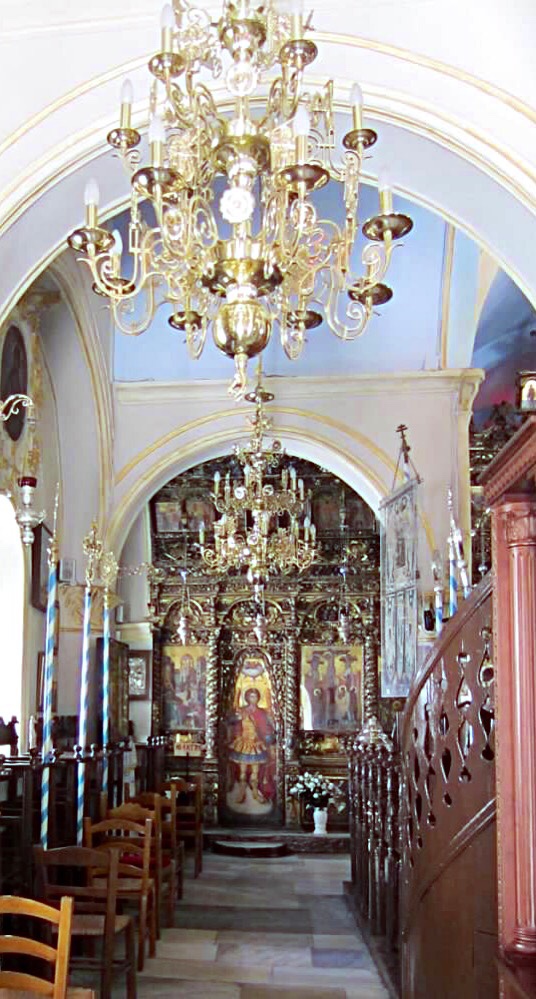
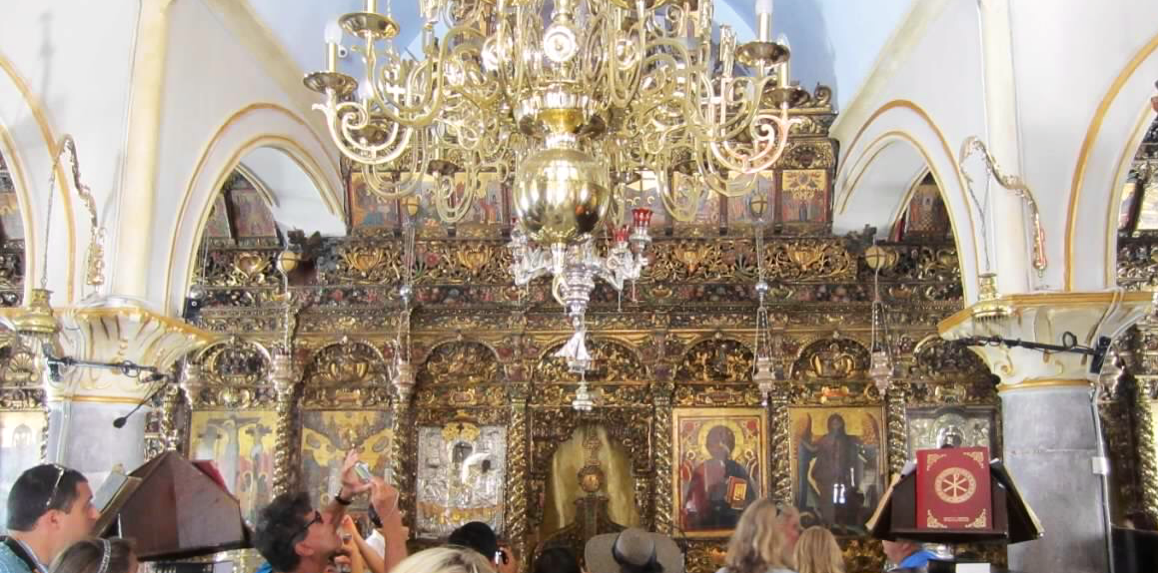
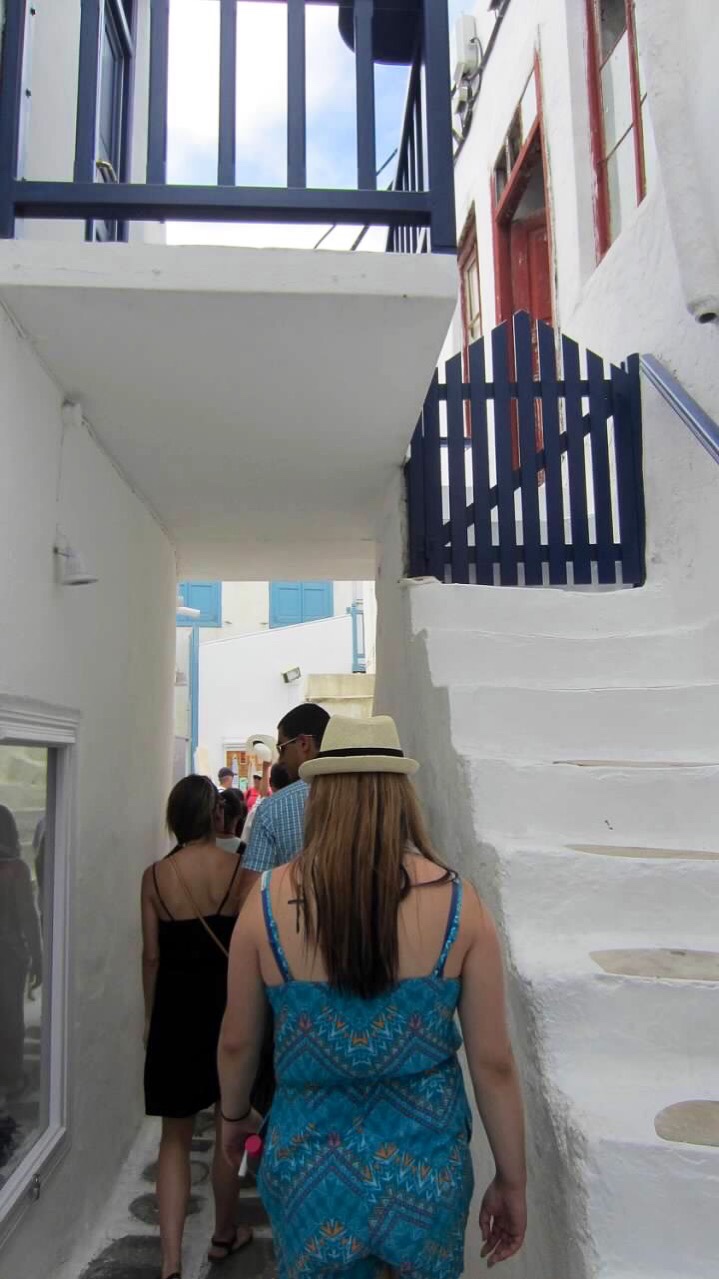
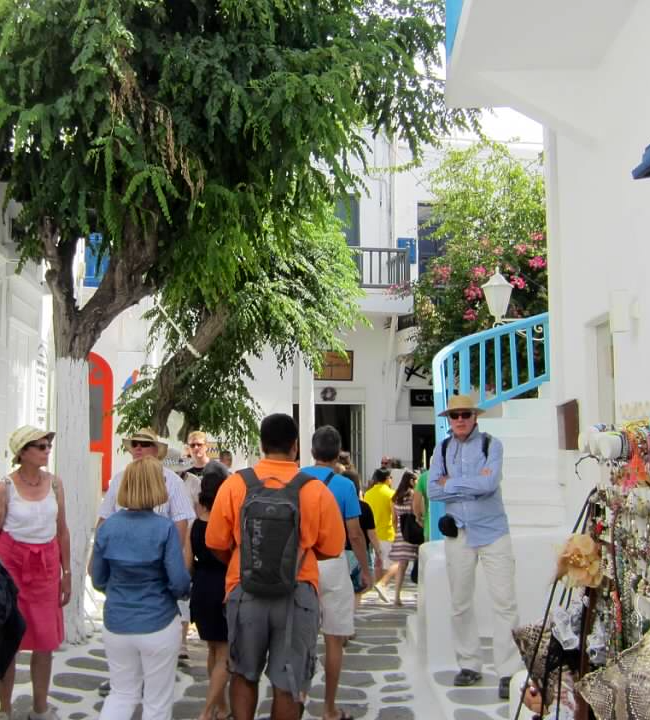
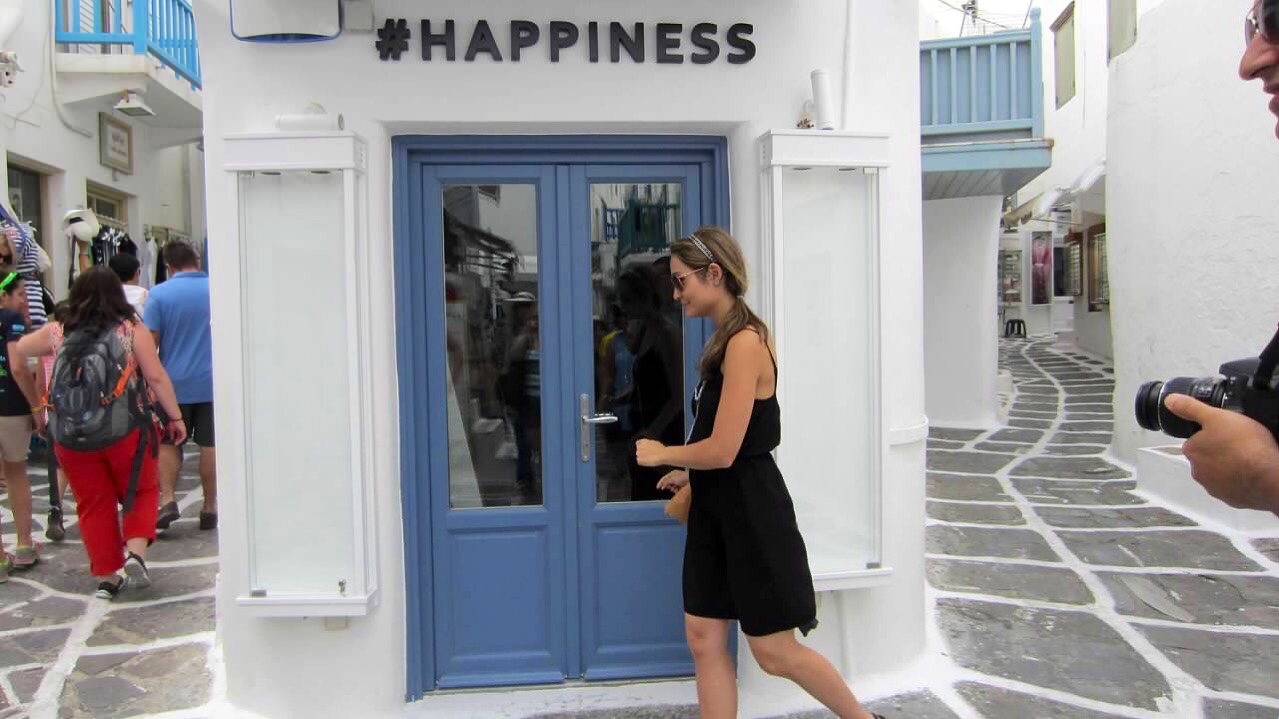
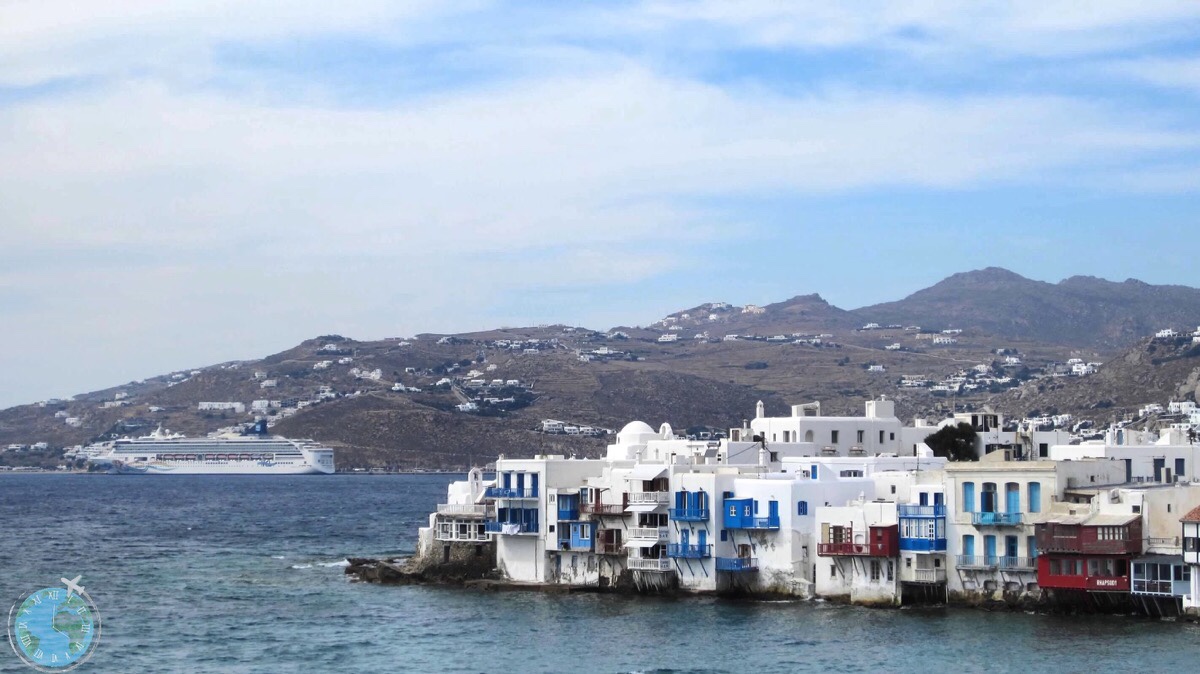
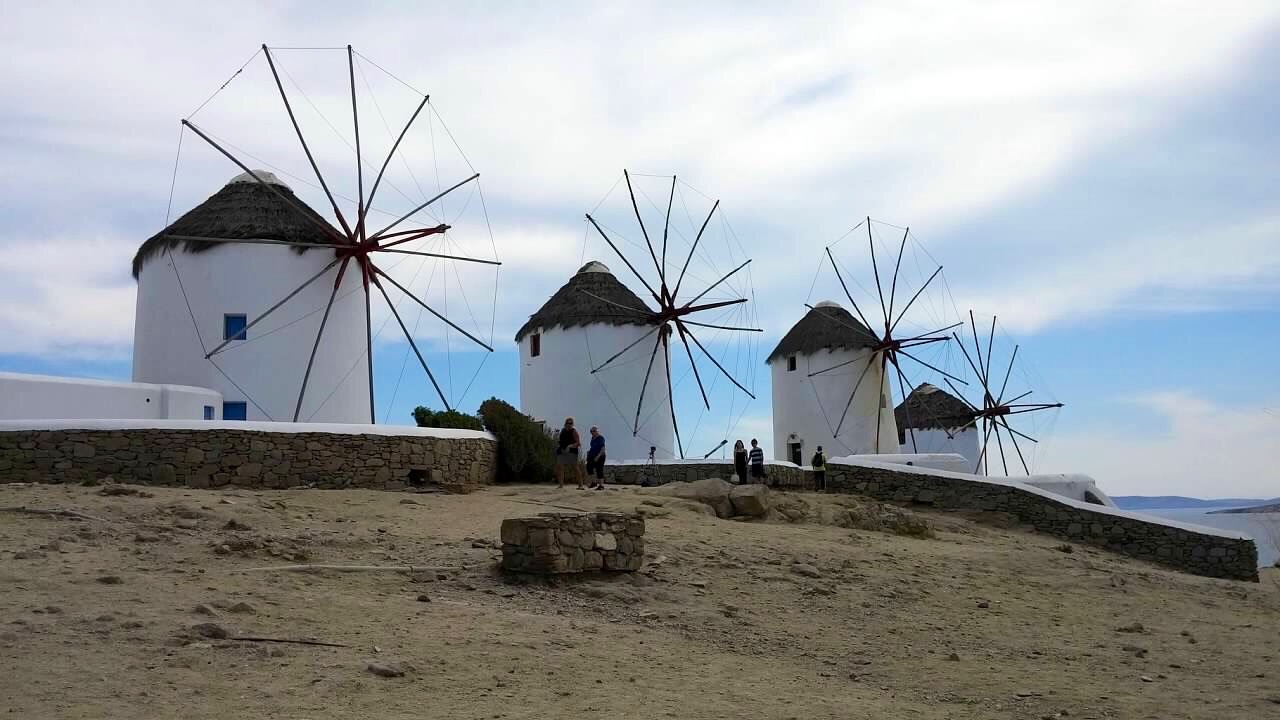
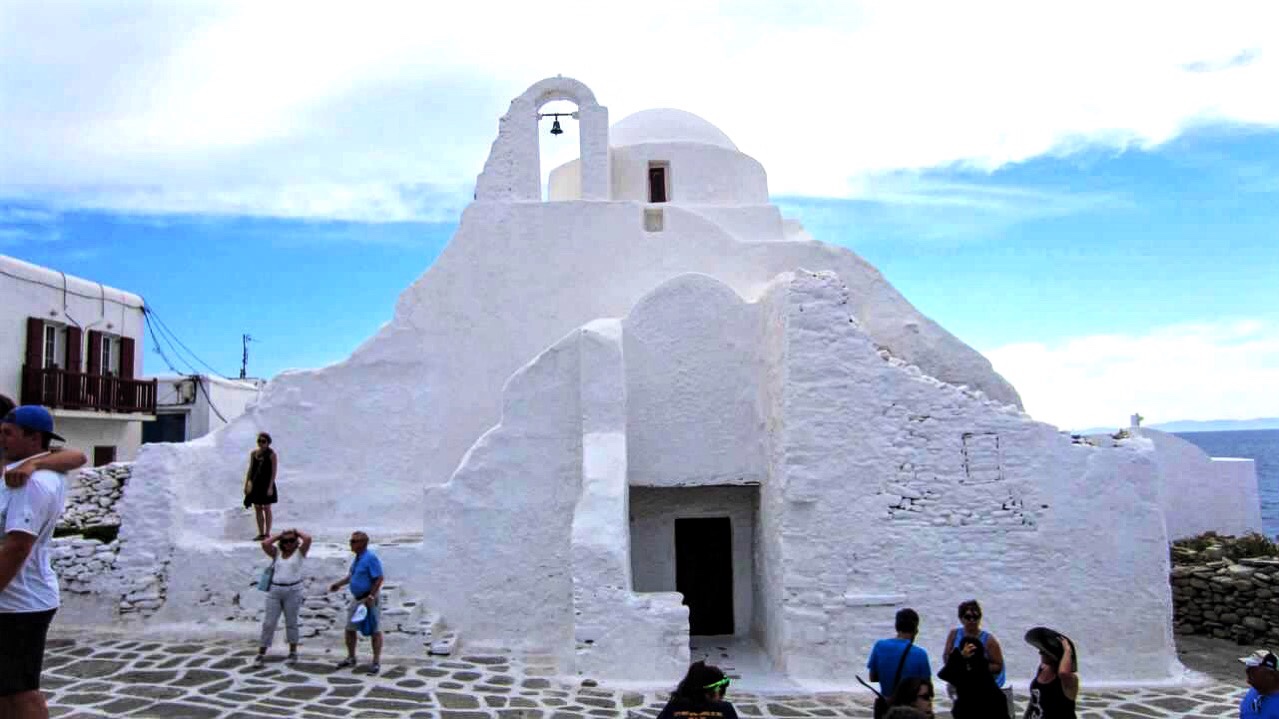
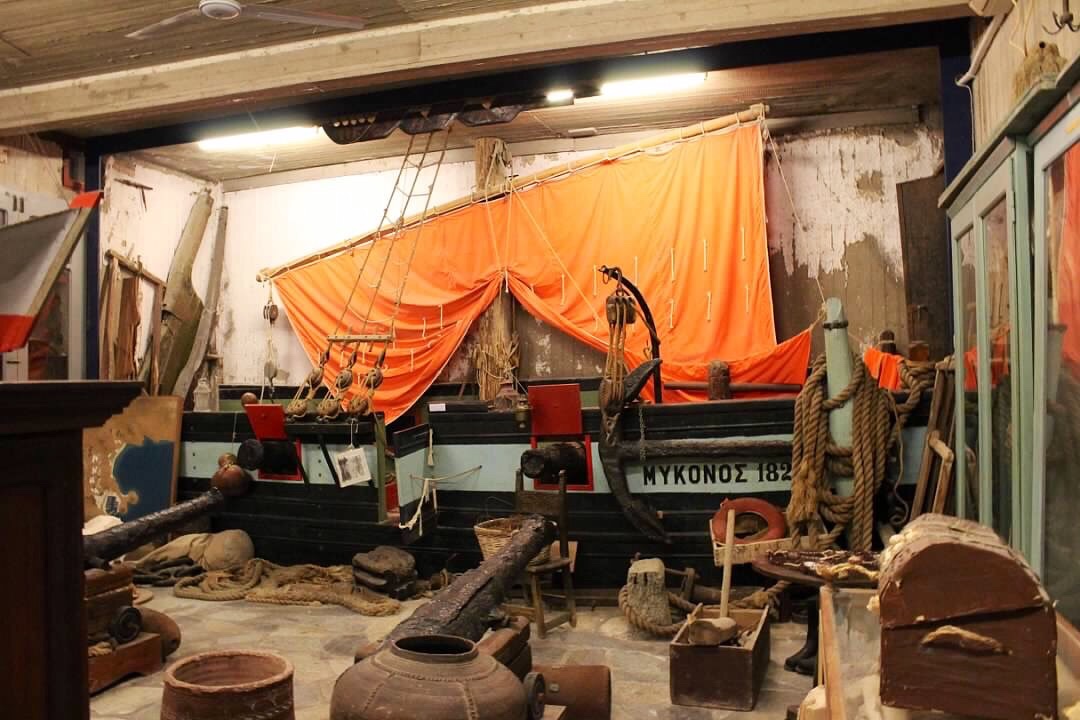
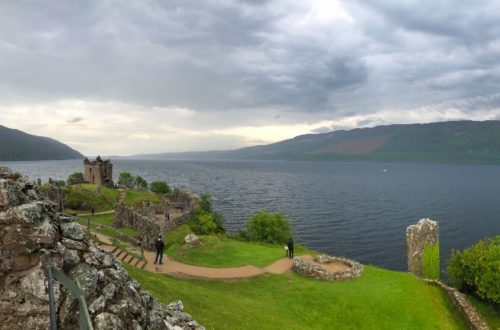
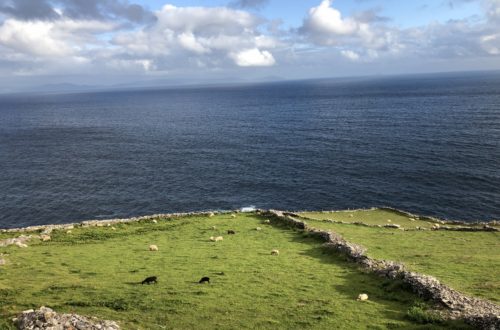
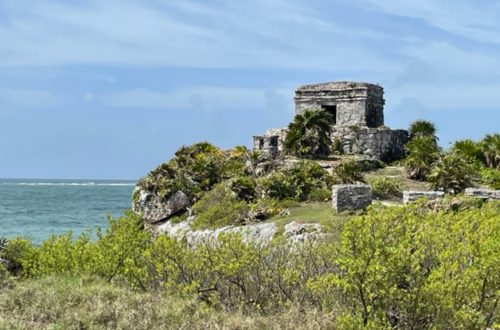
5 Comments
Sarah Camp
What an informative post! Greece is our dream – we have it tabled for 2021 but now we’re unsure – but thank you for sharing all of your tips and photos! We’d love to get to Turkey one day too!
Ness
Thank you! Greece is beautiful and there is some really cool history in Istanbul! Best of luck with your travel plans!
Pingback:
Pingback:
Pingback: